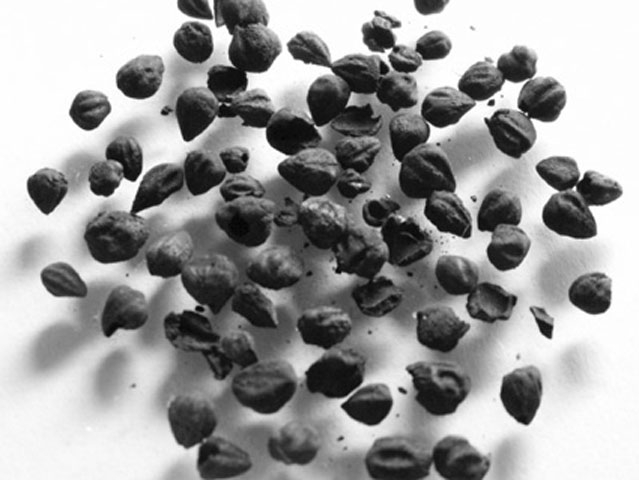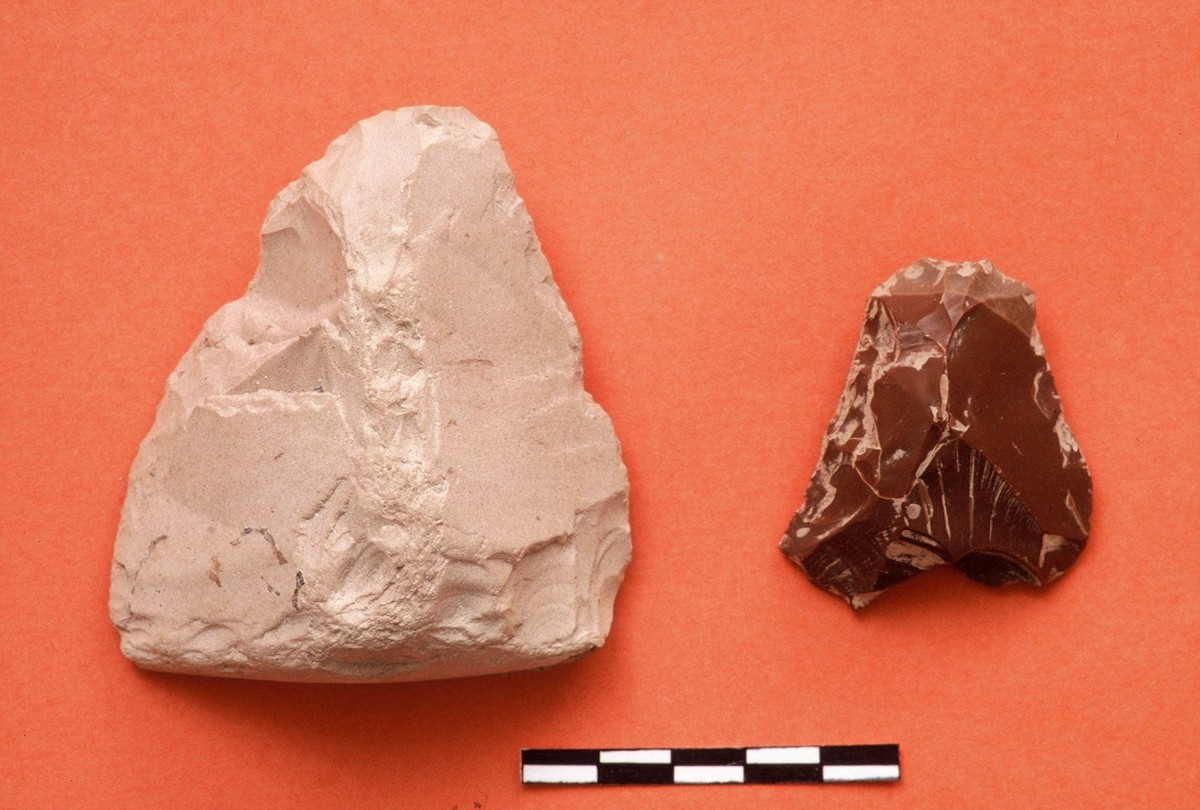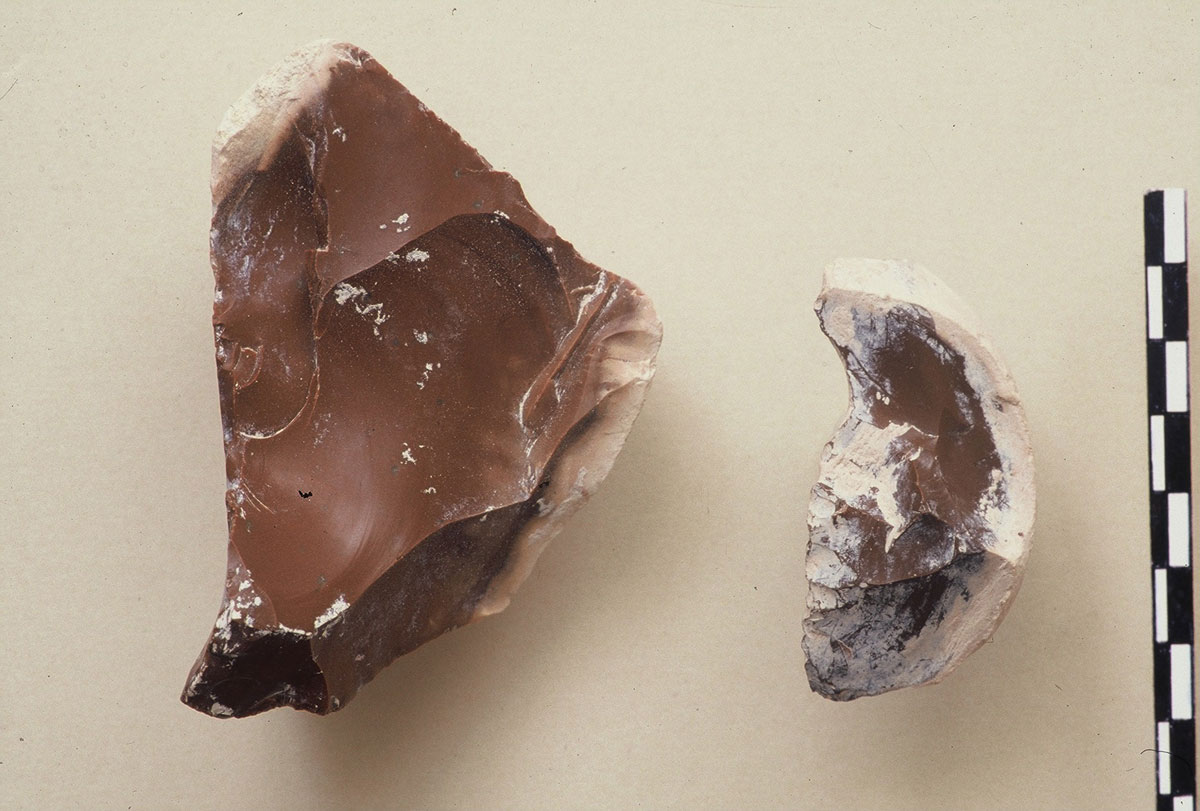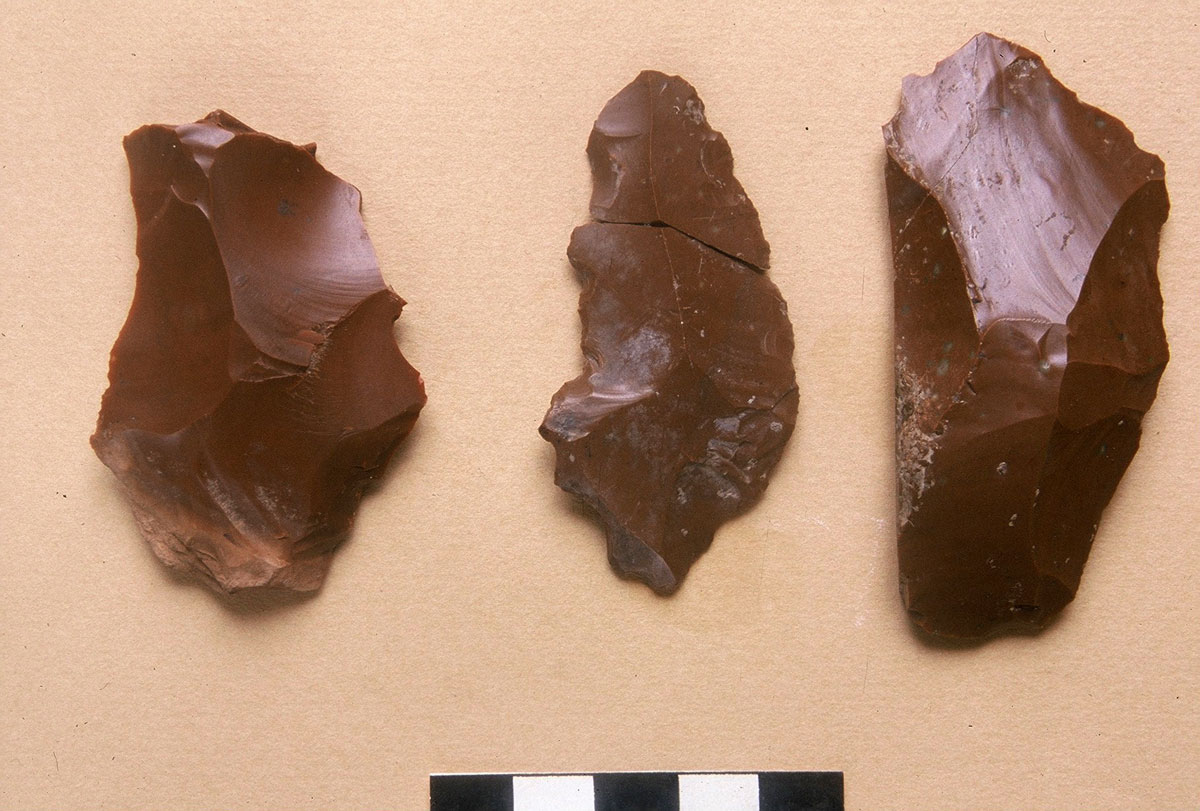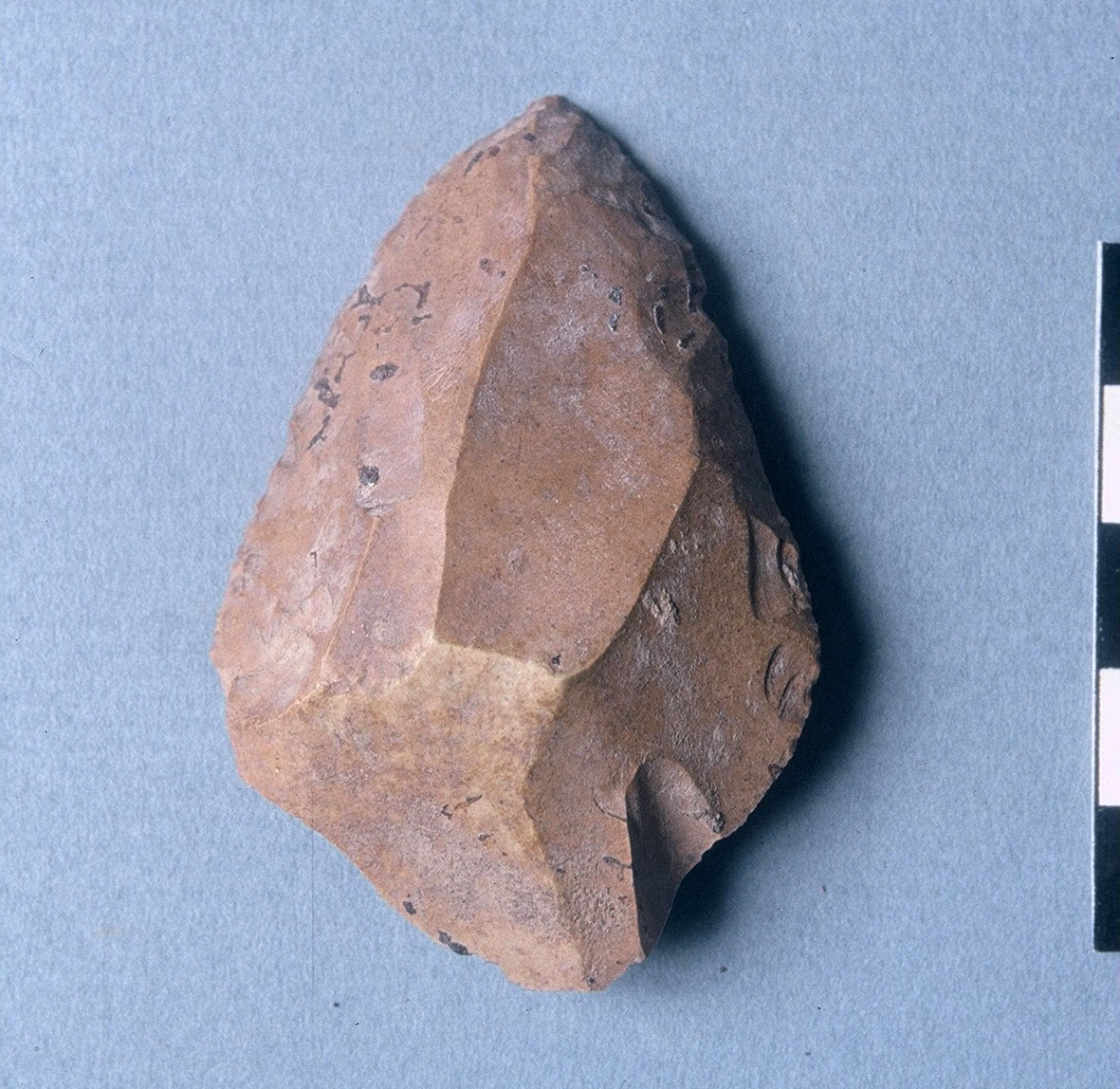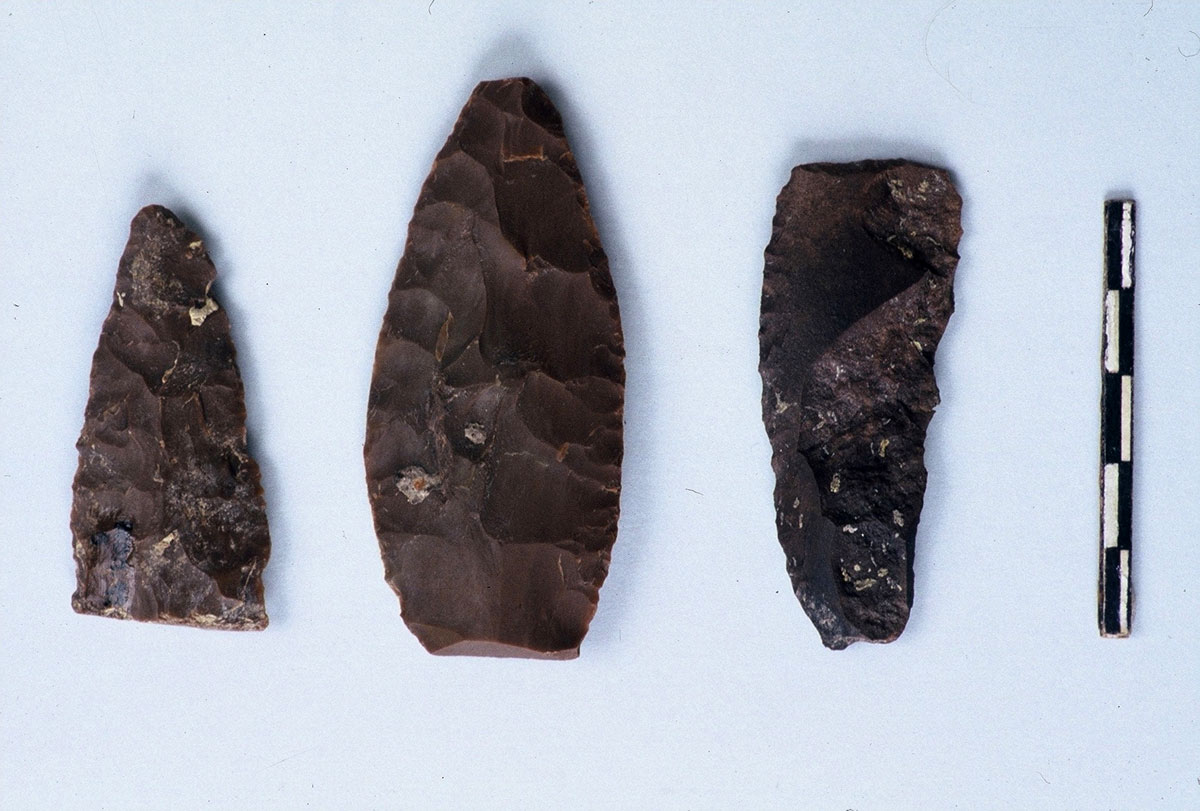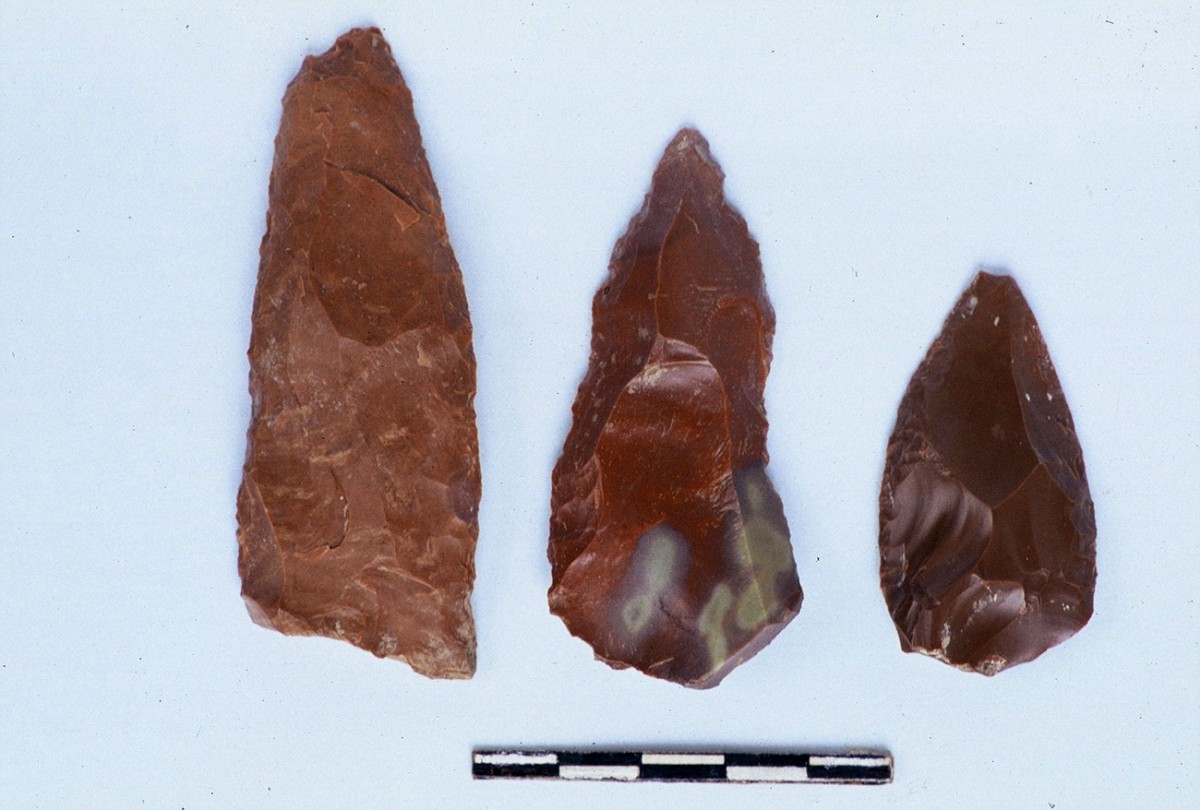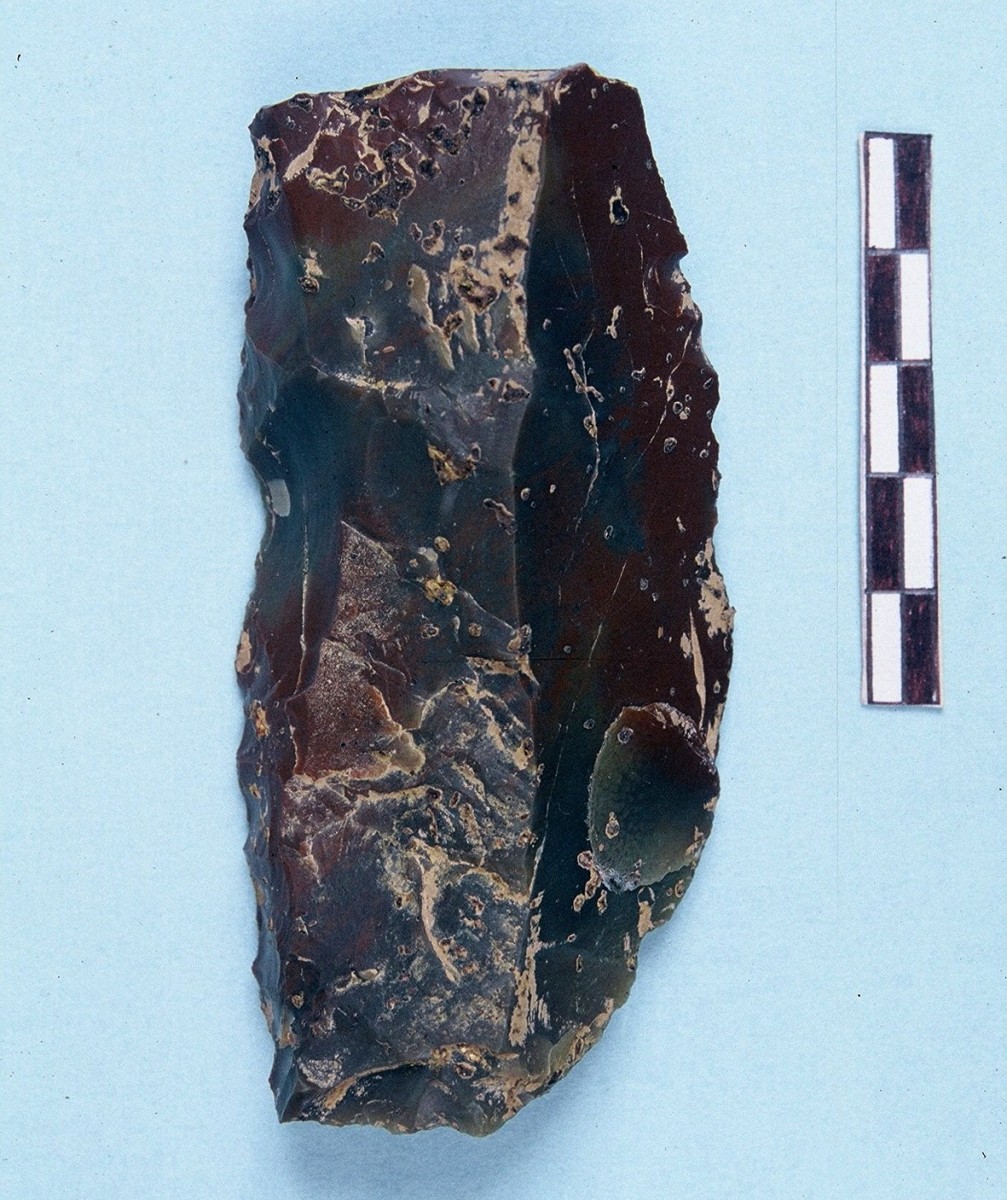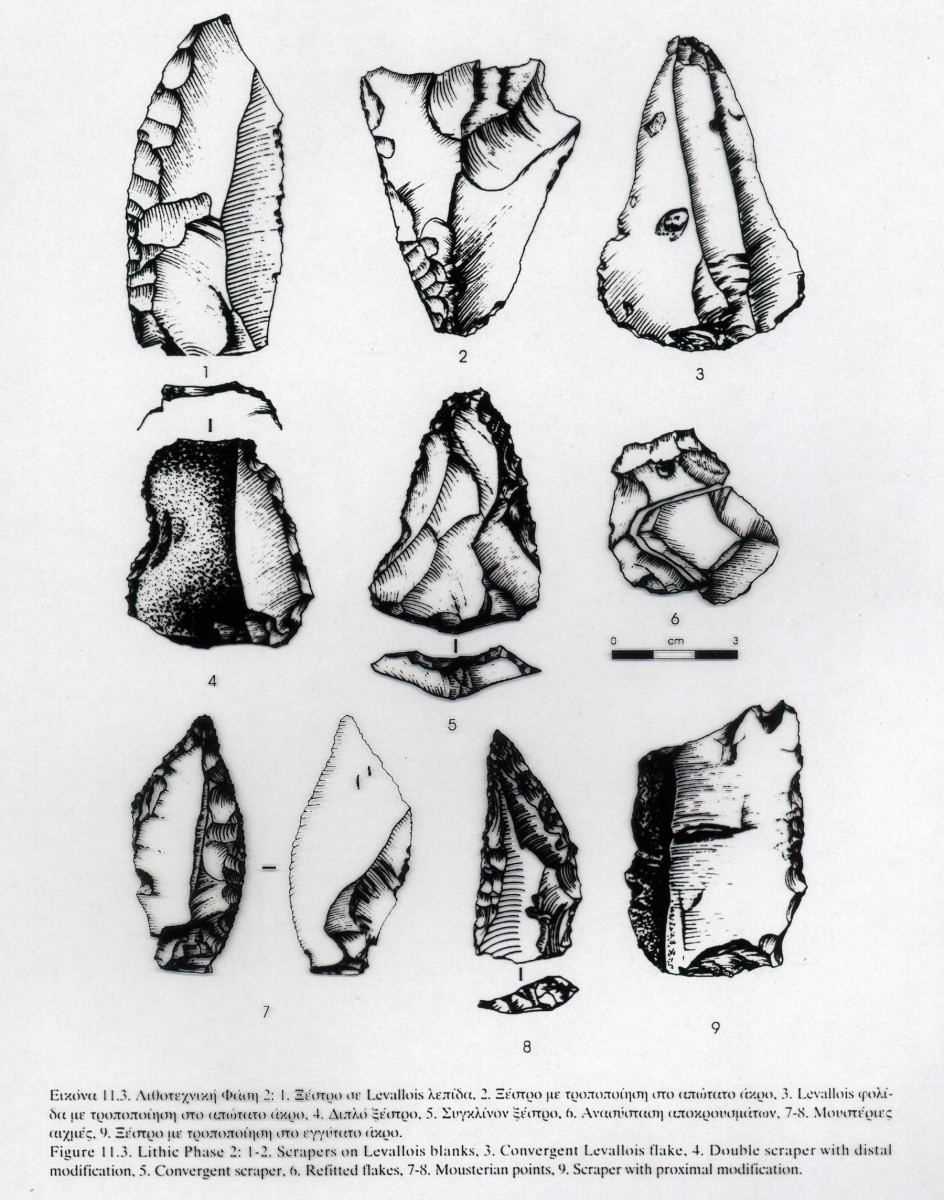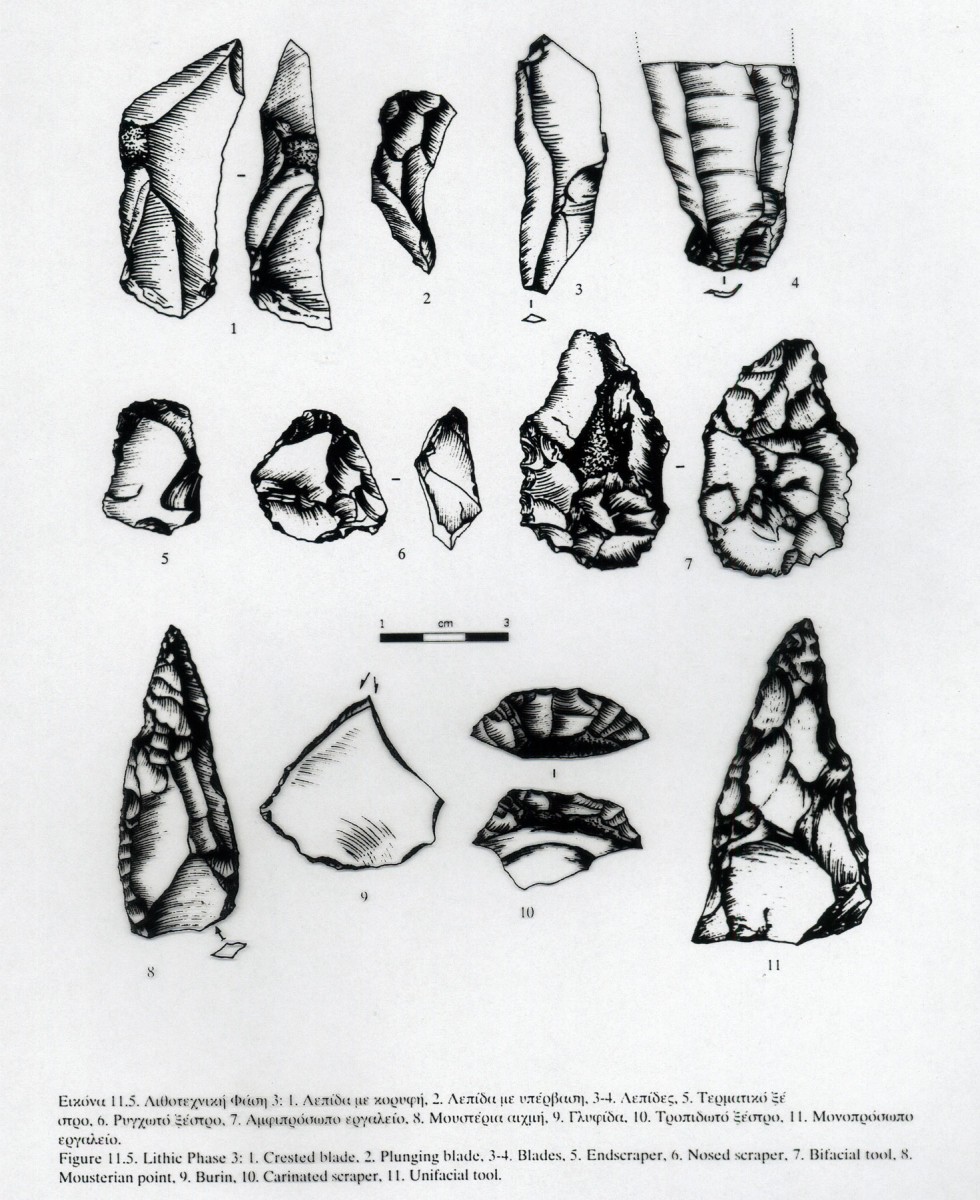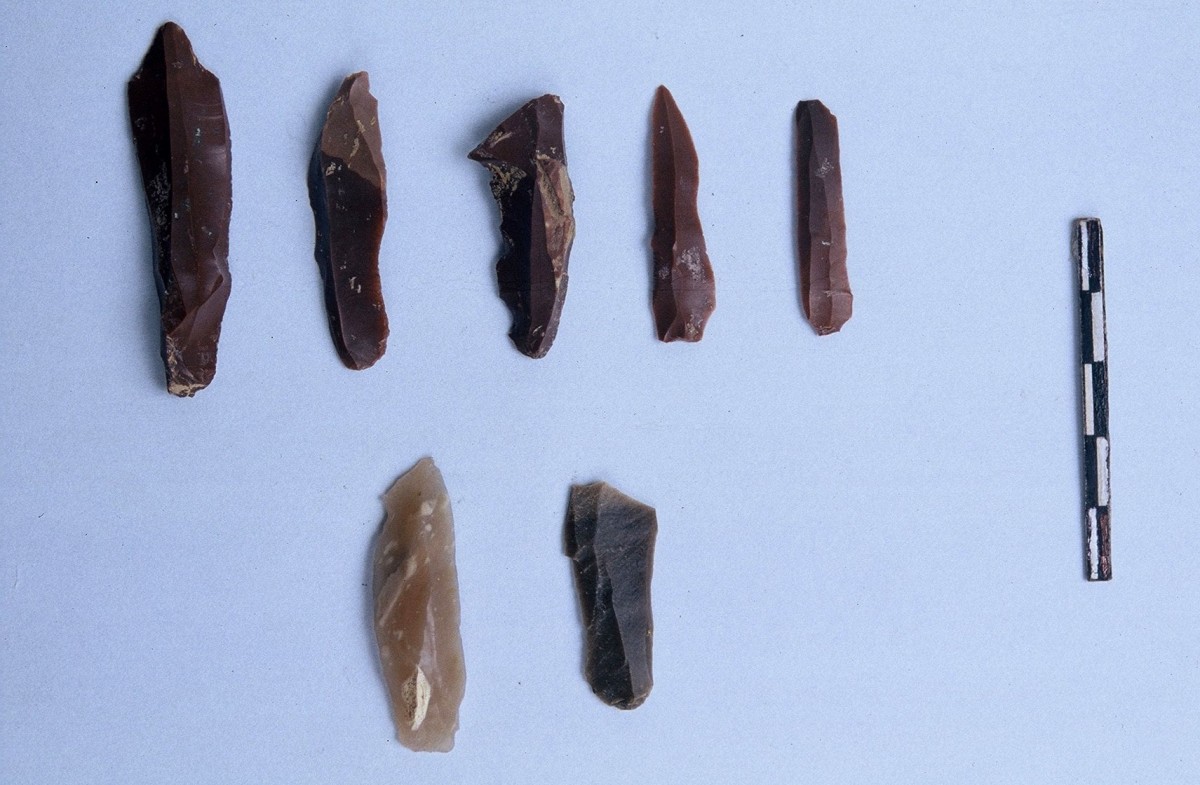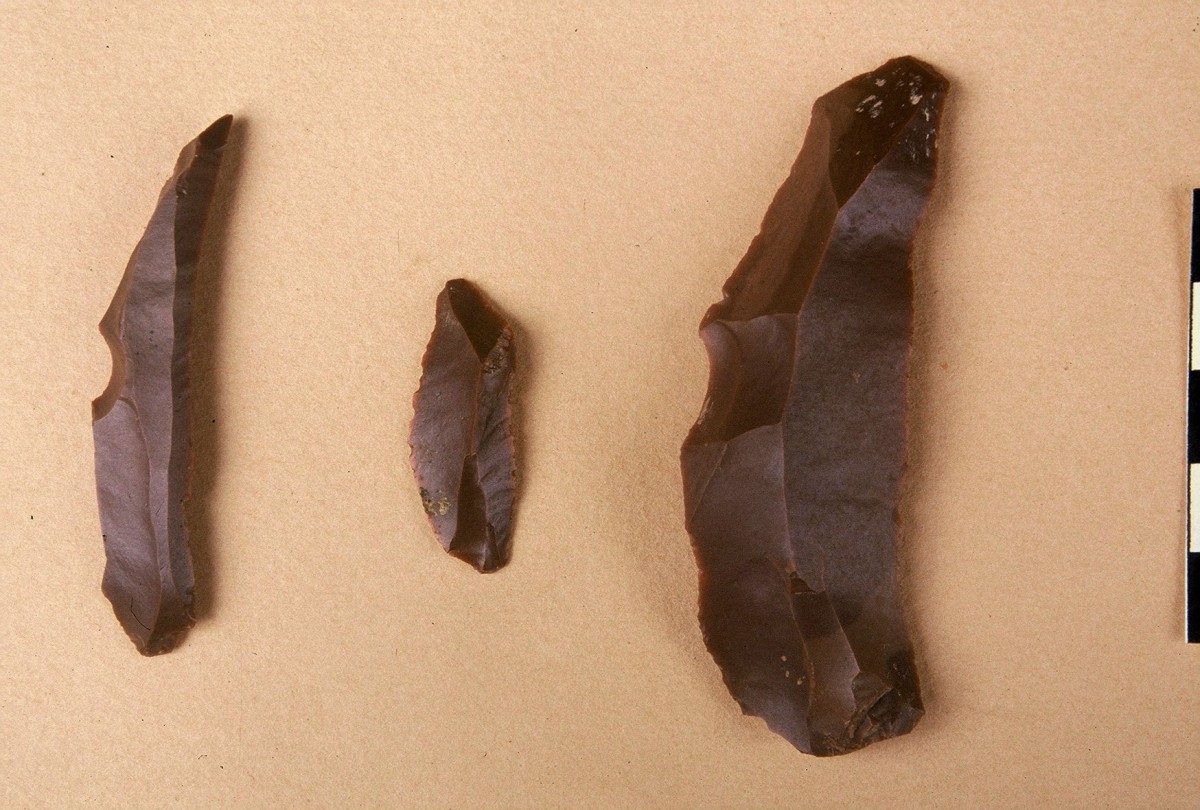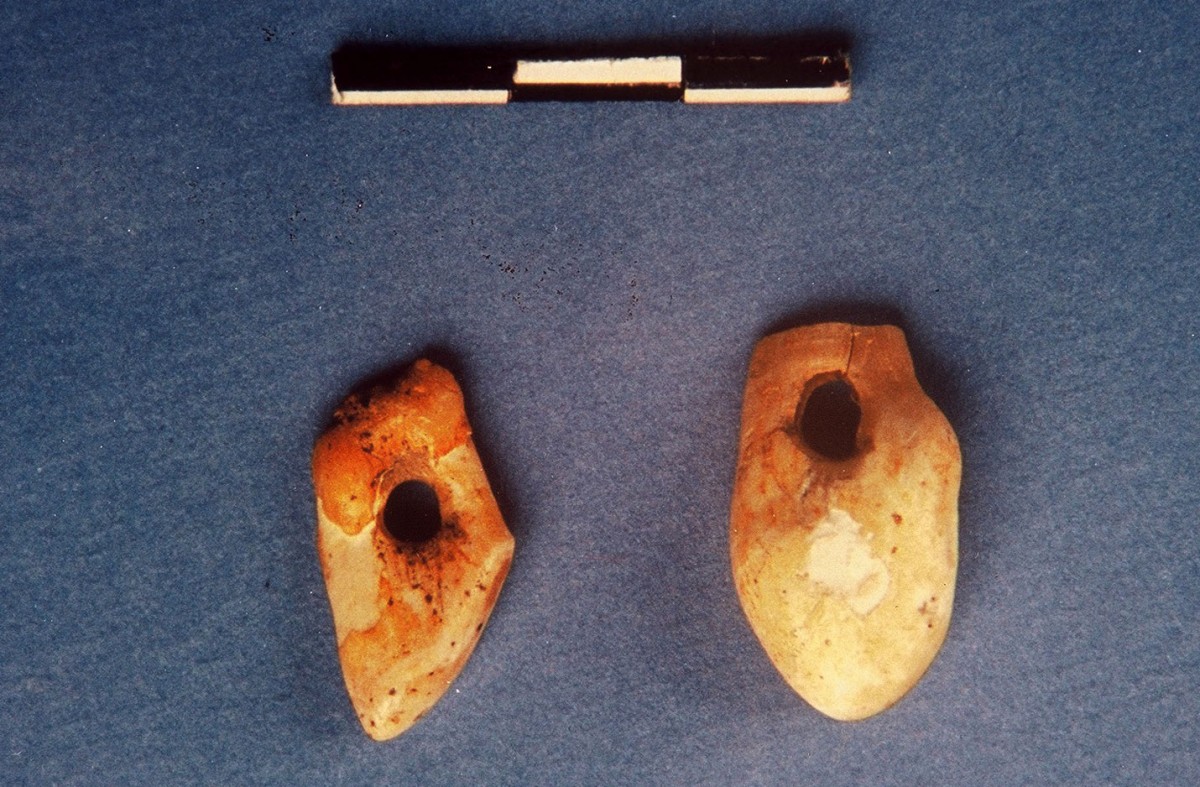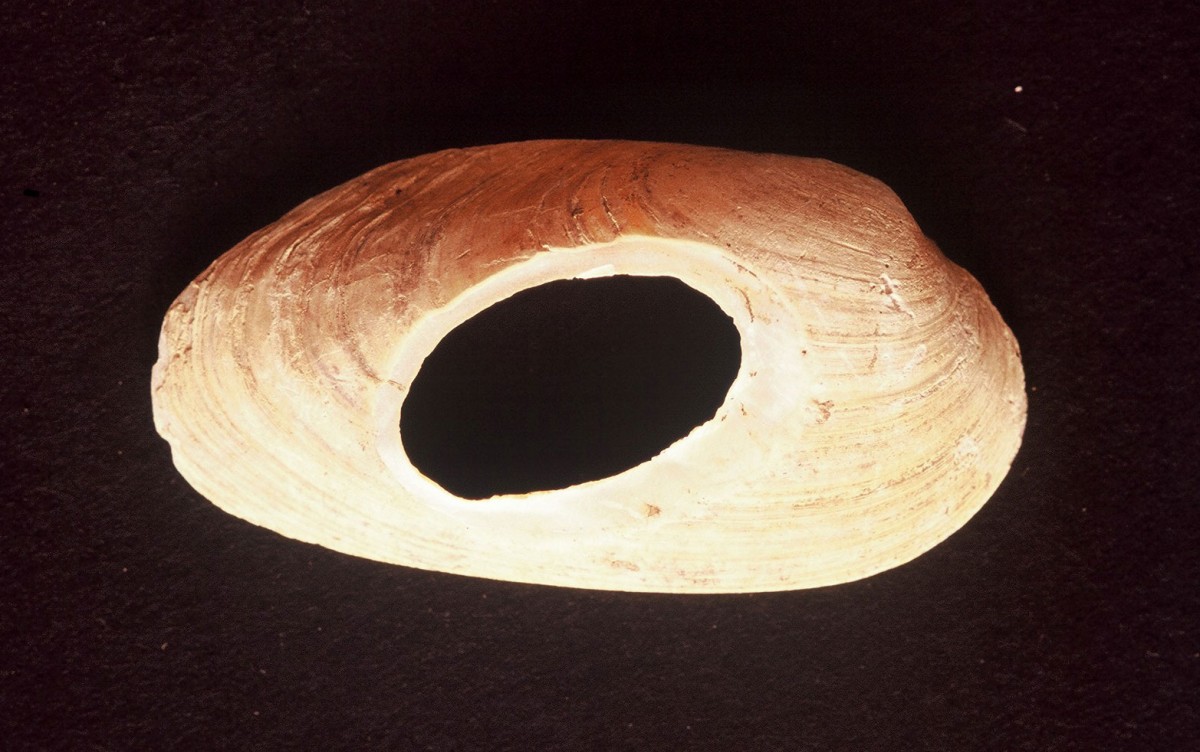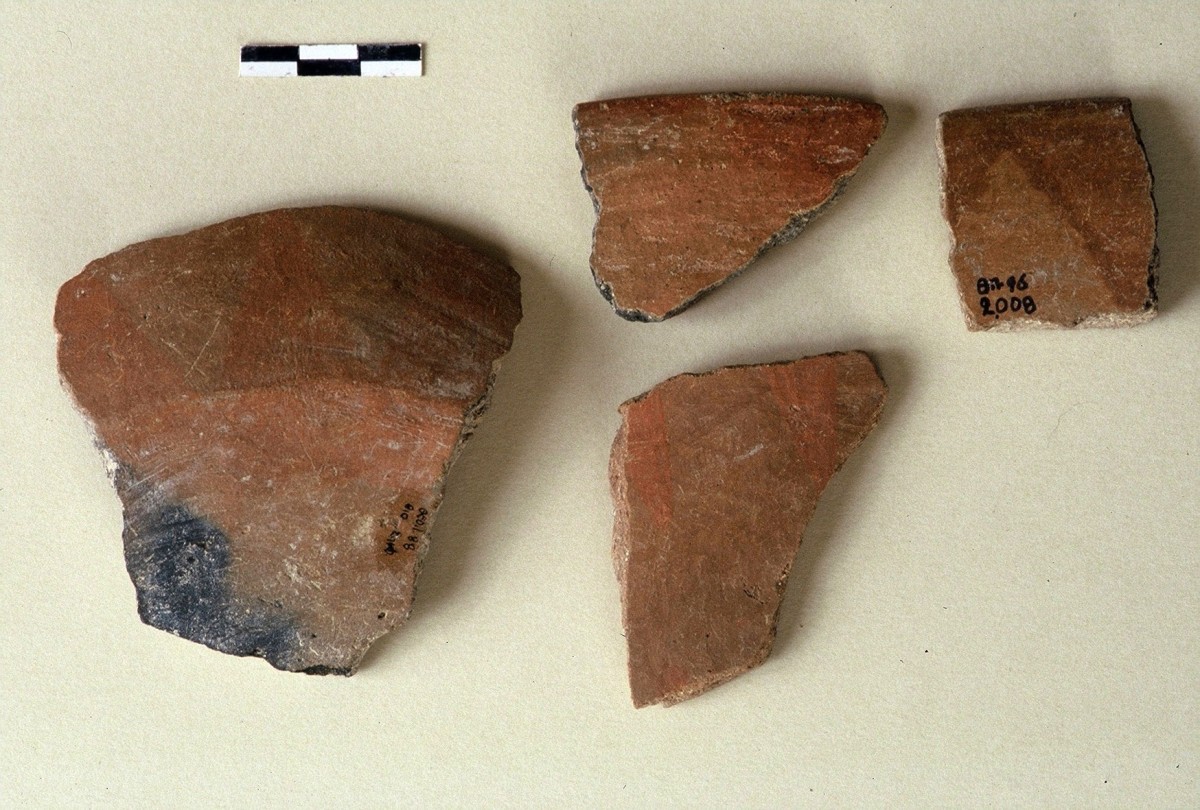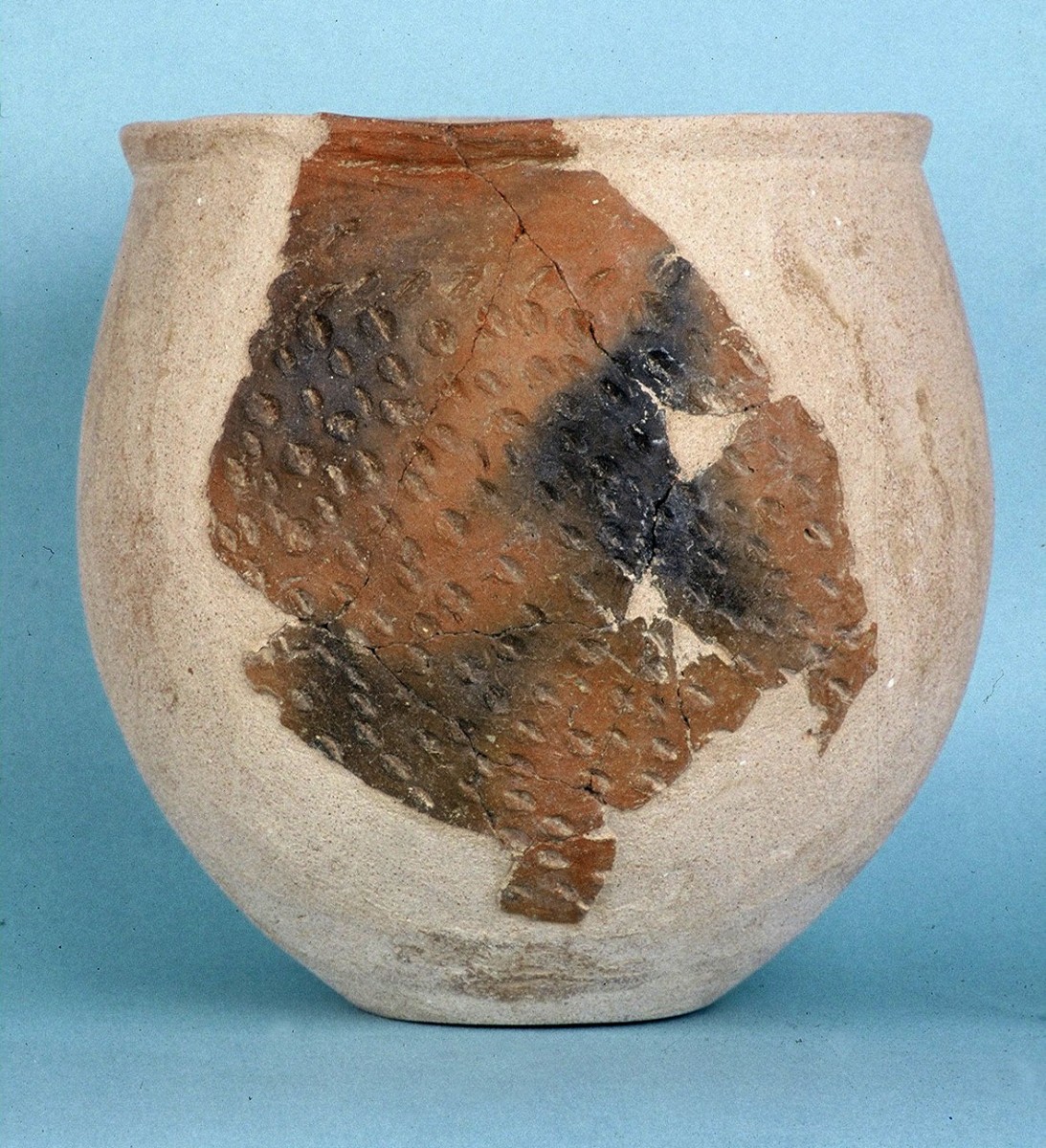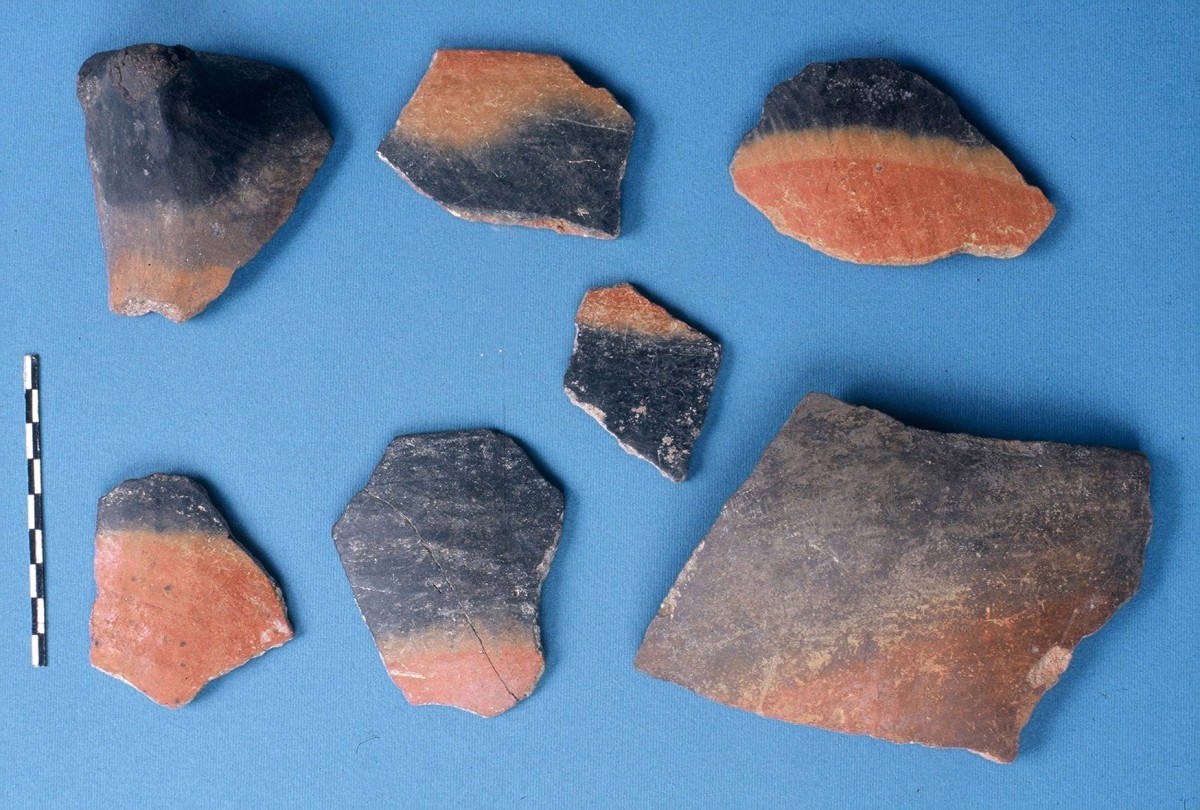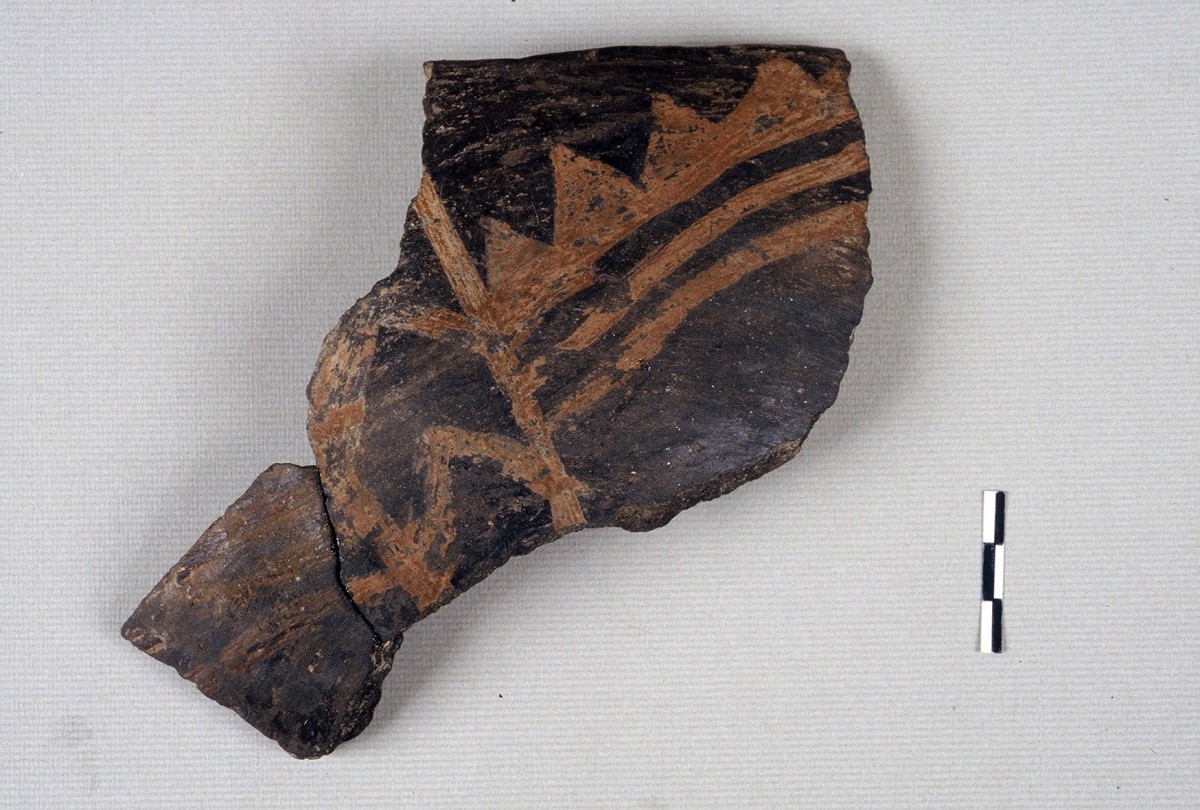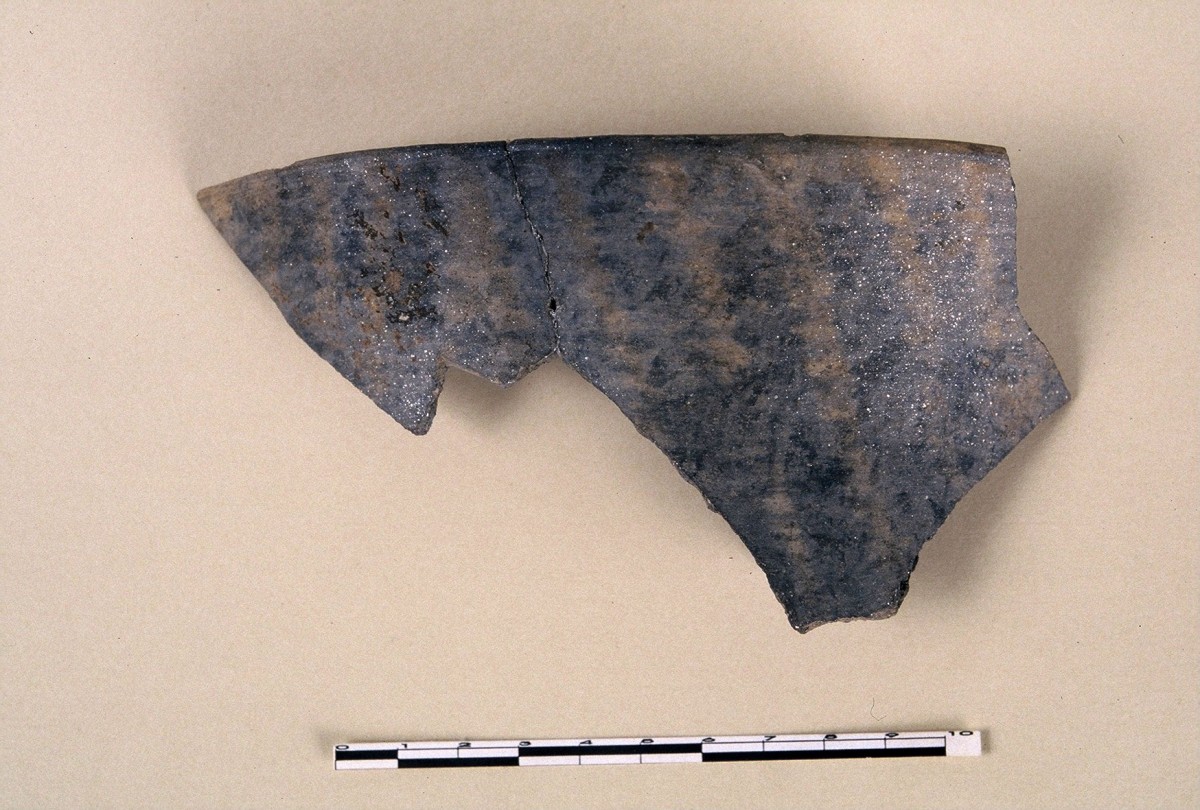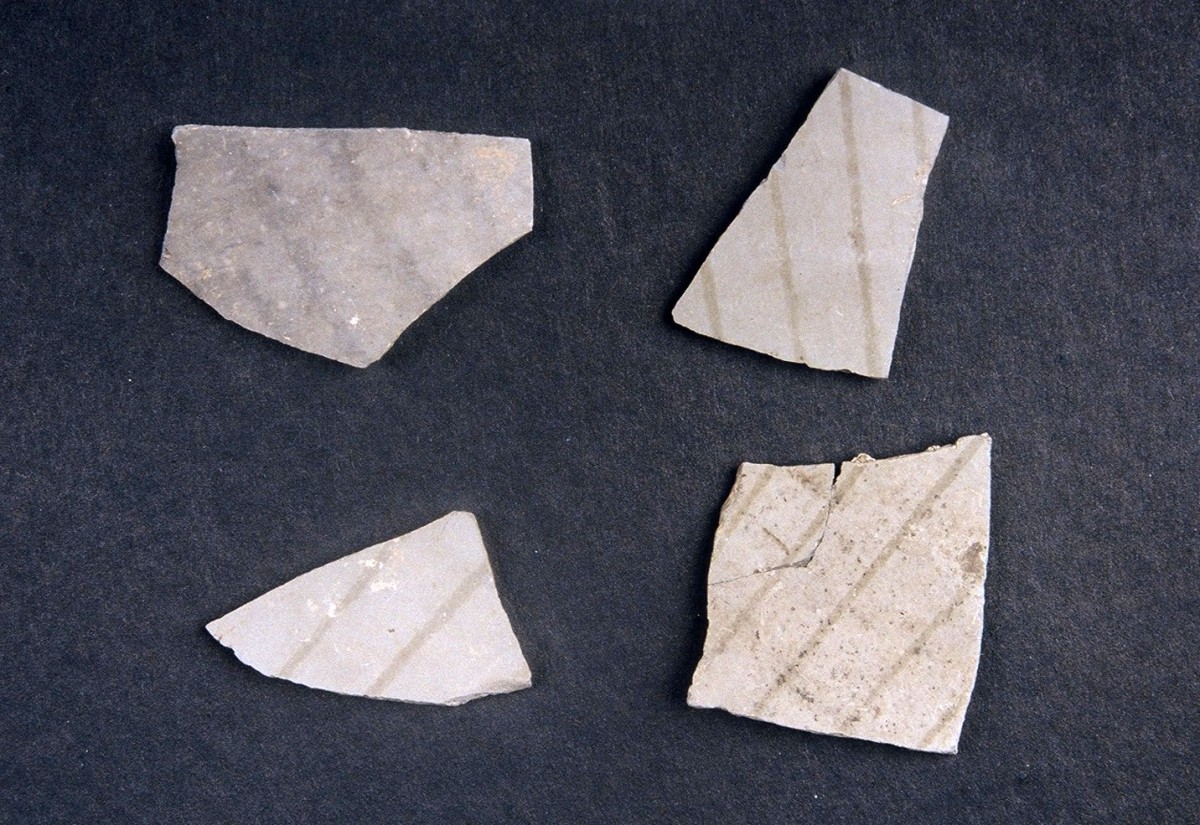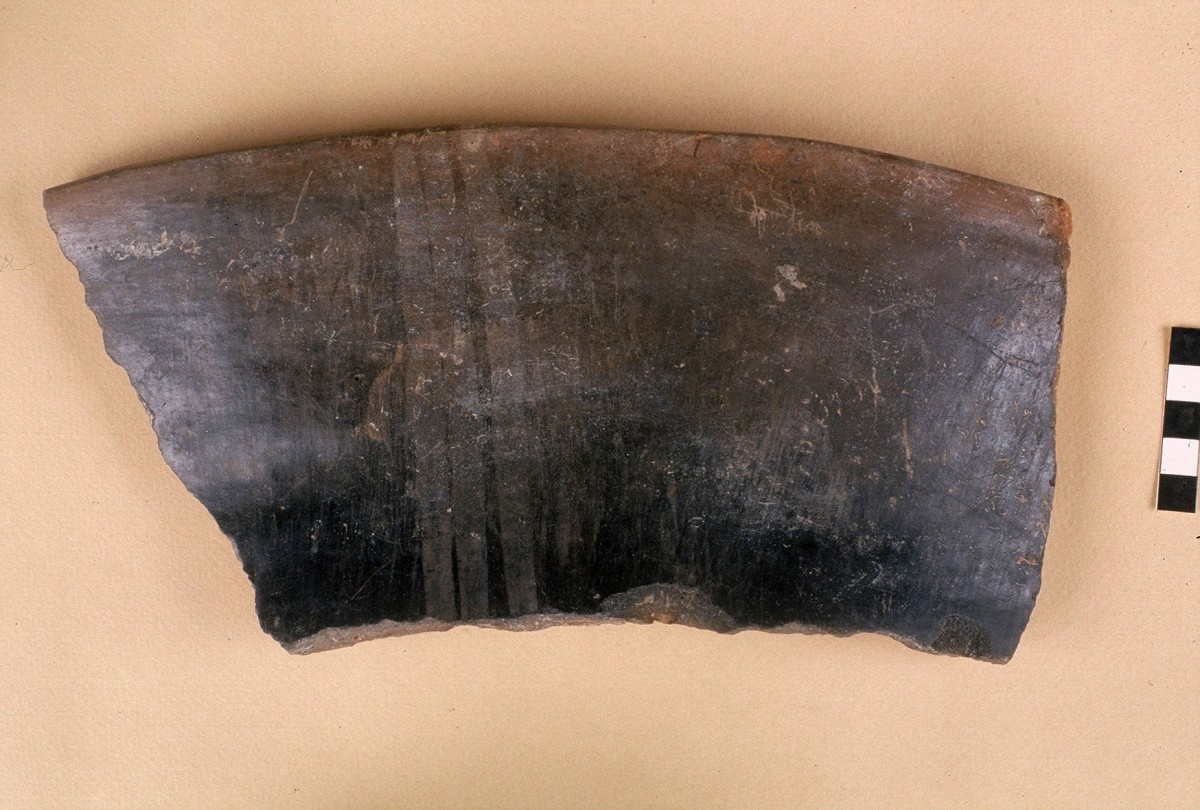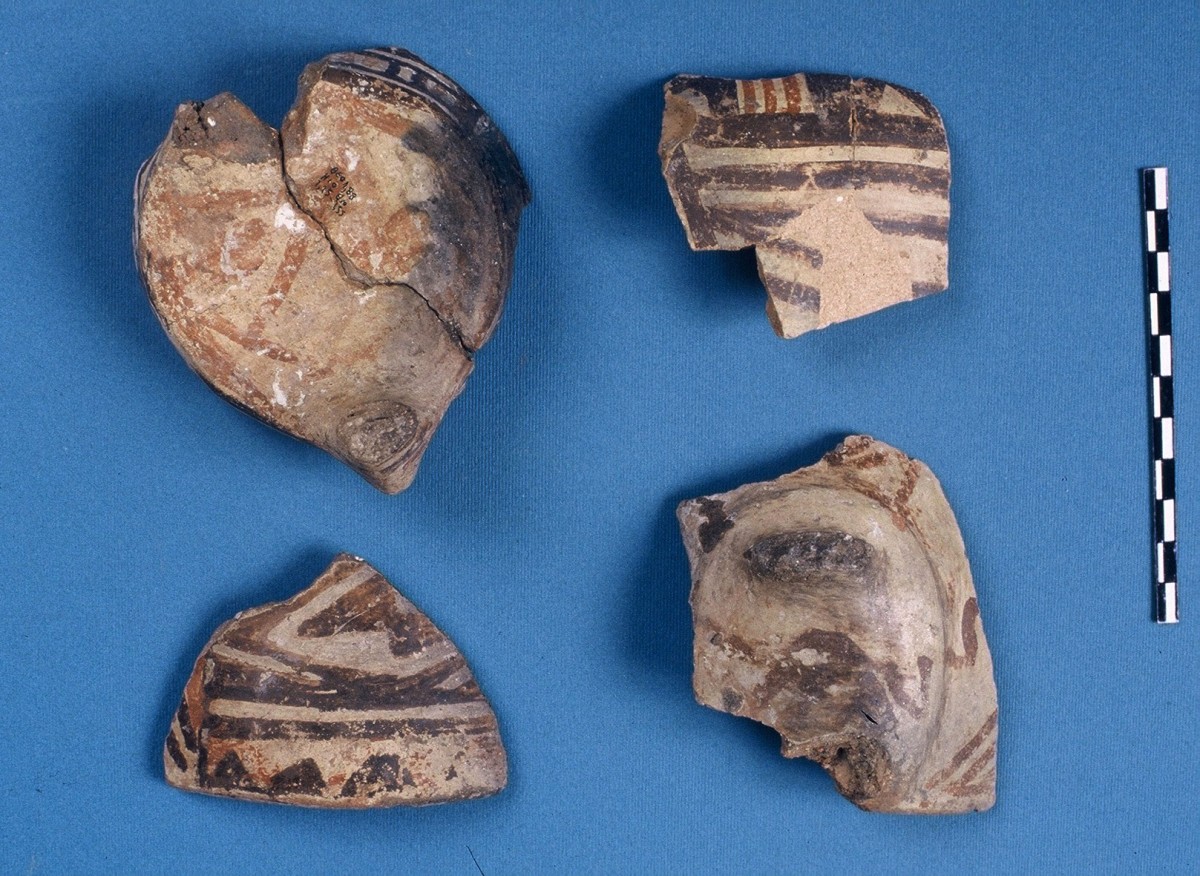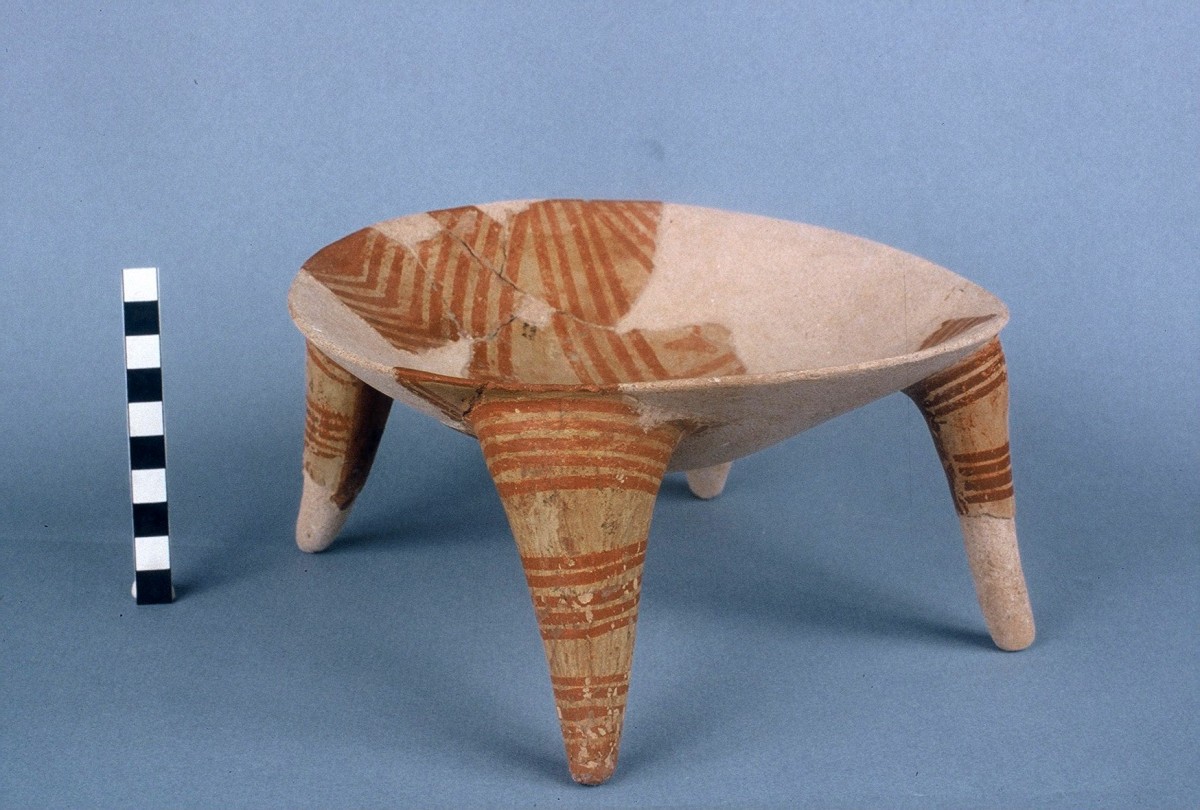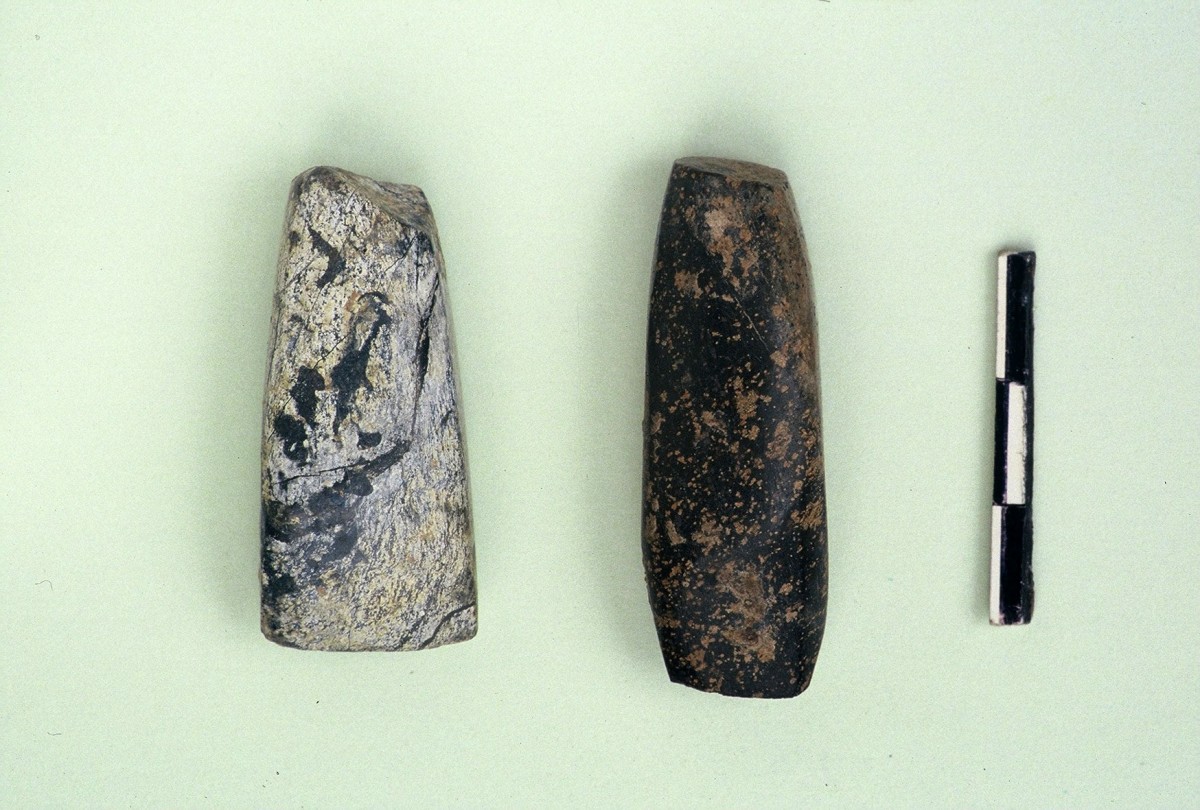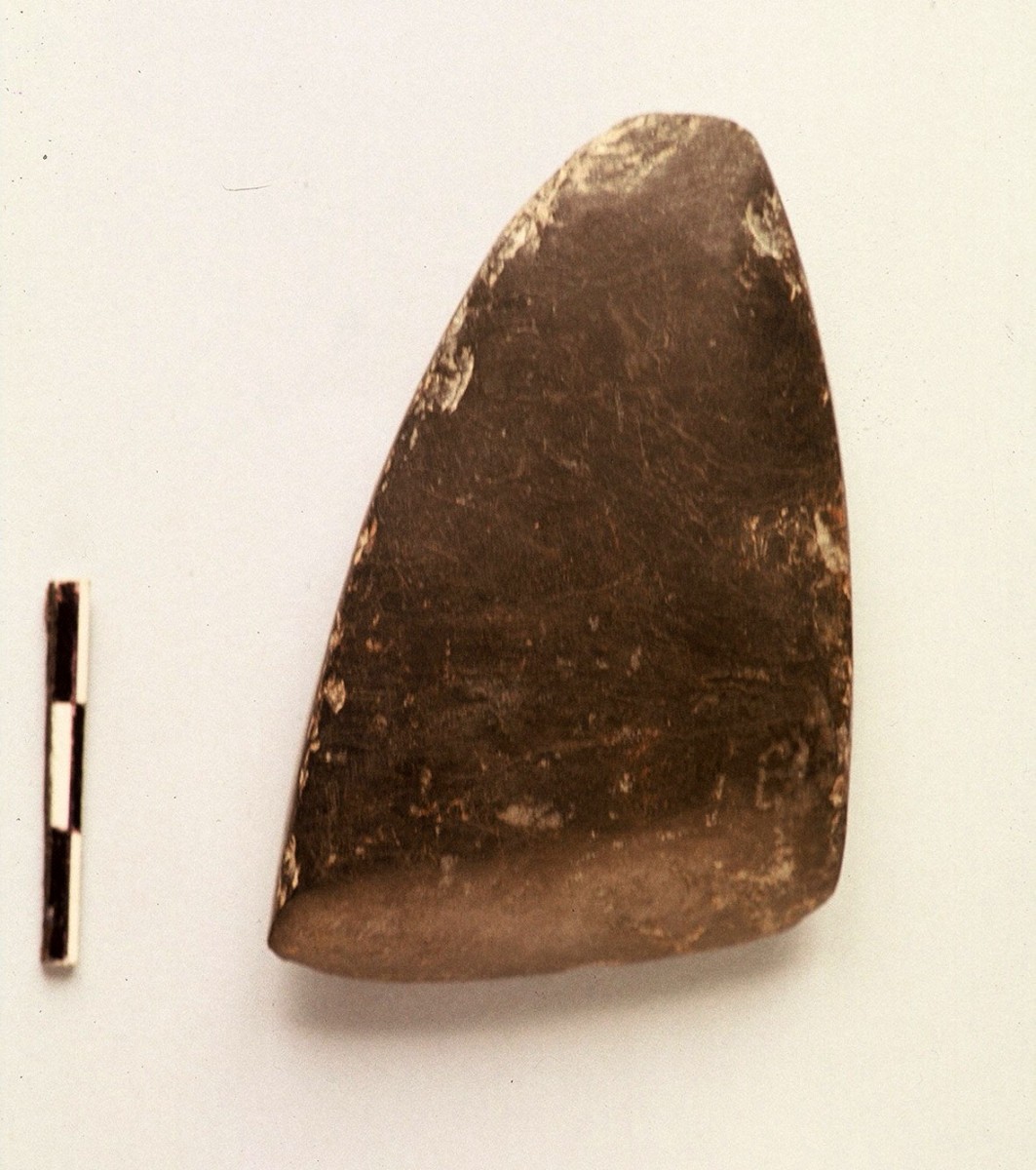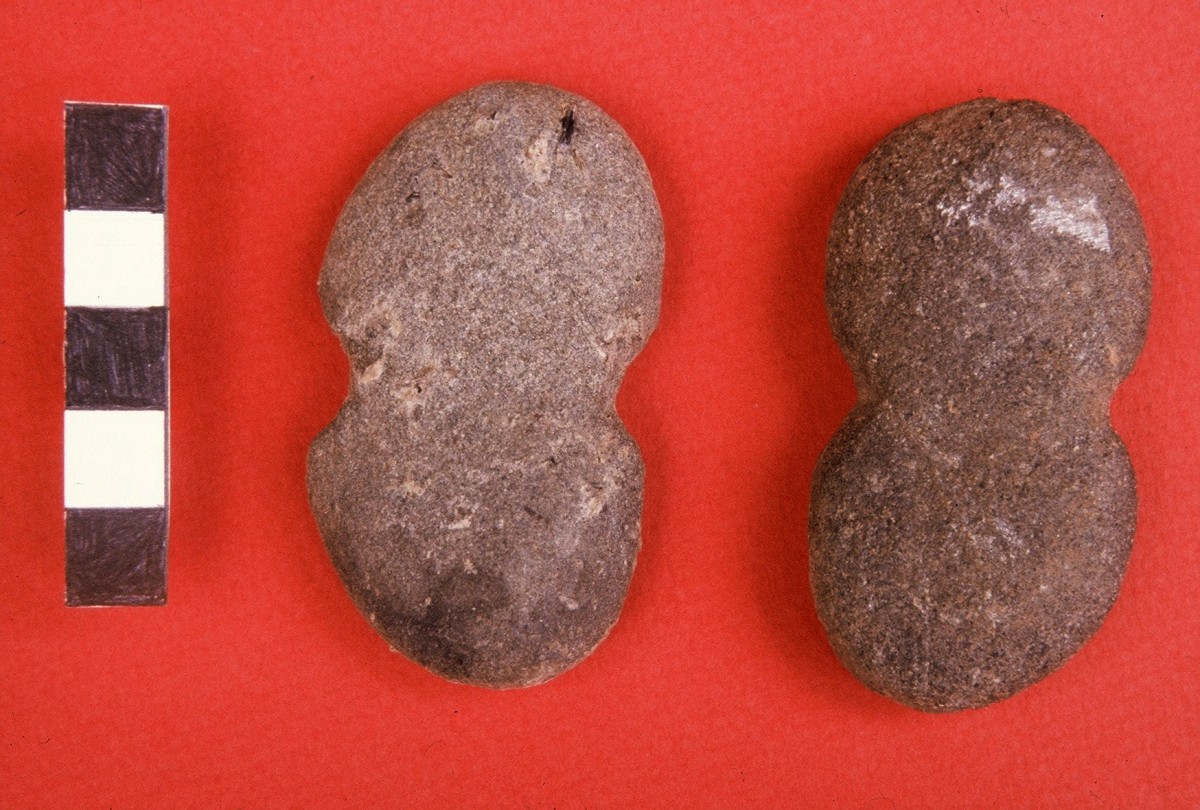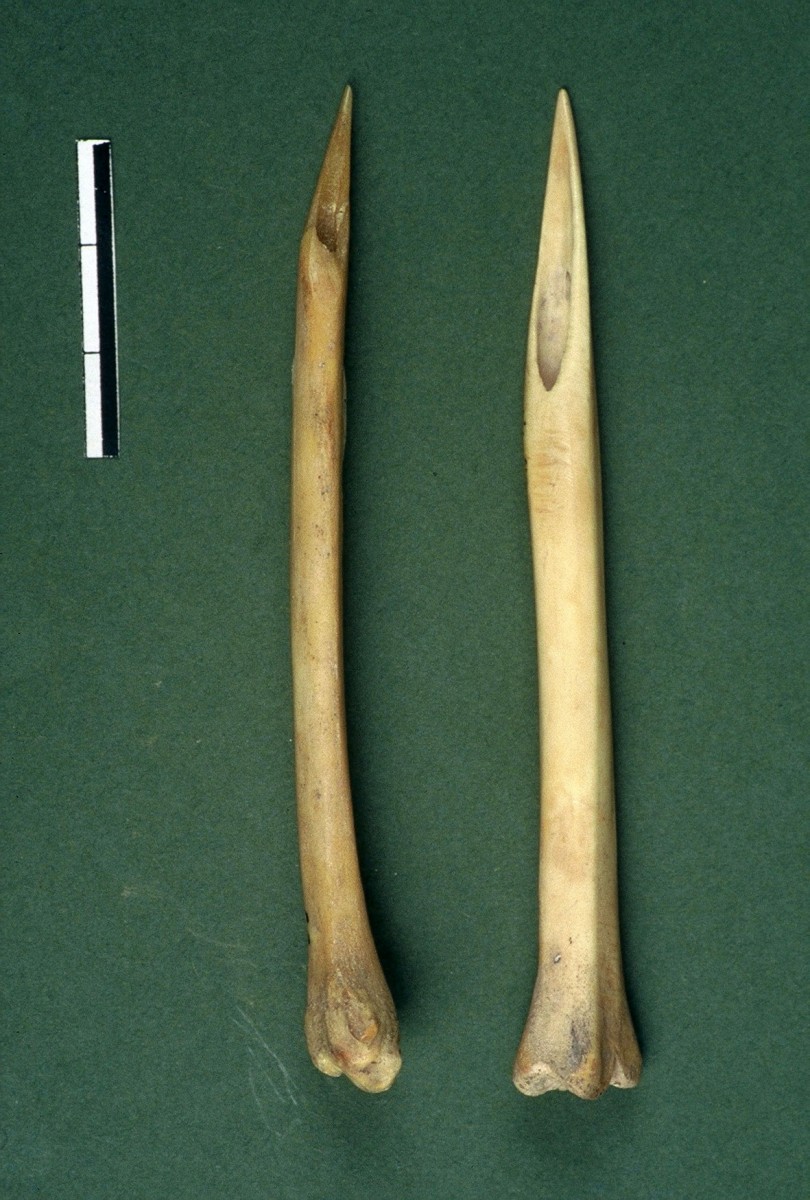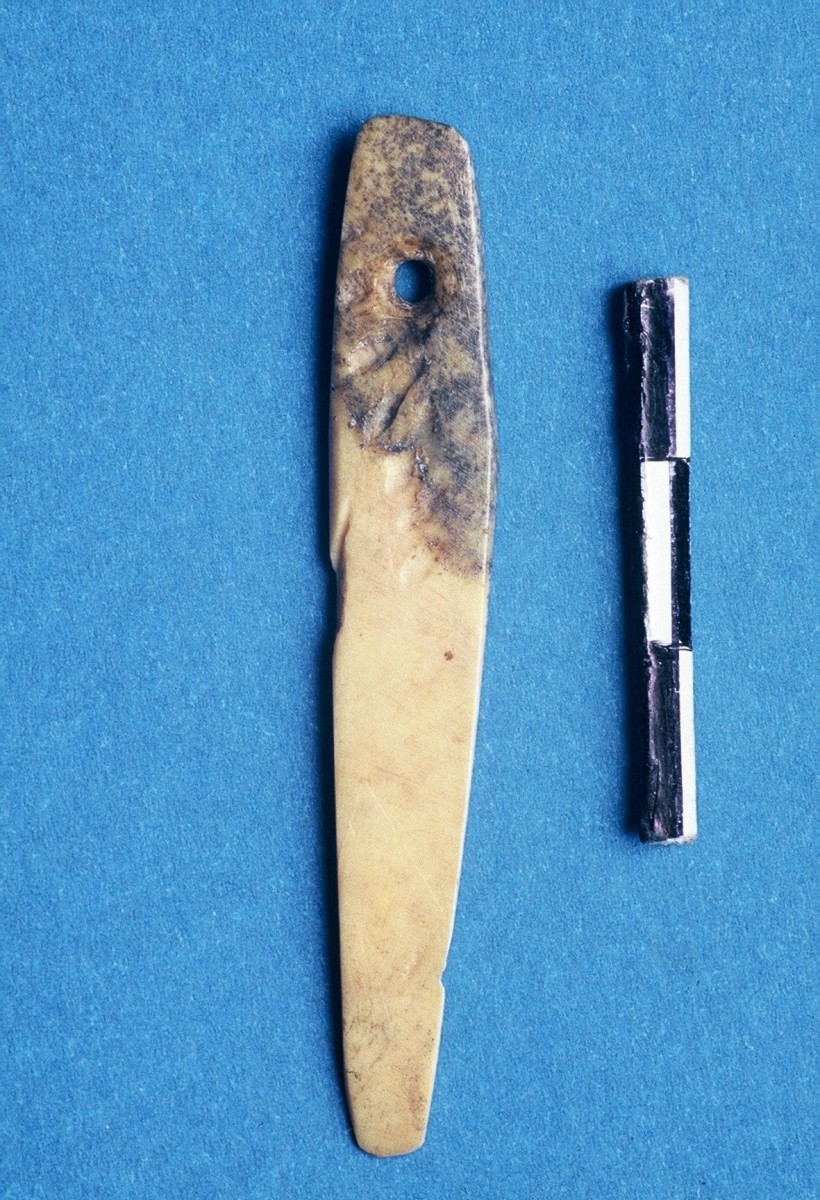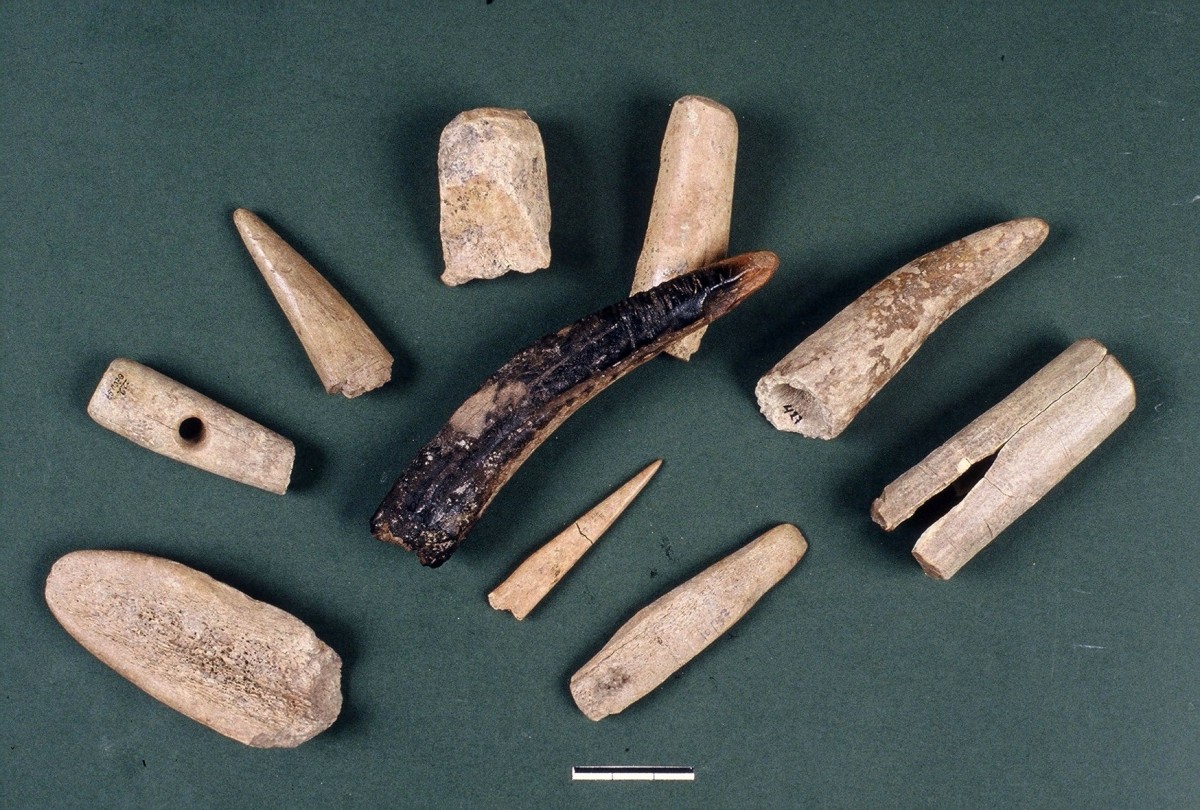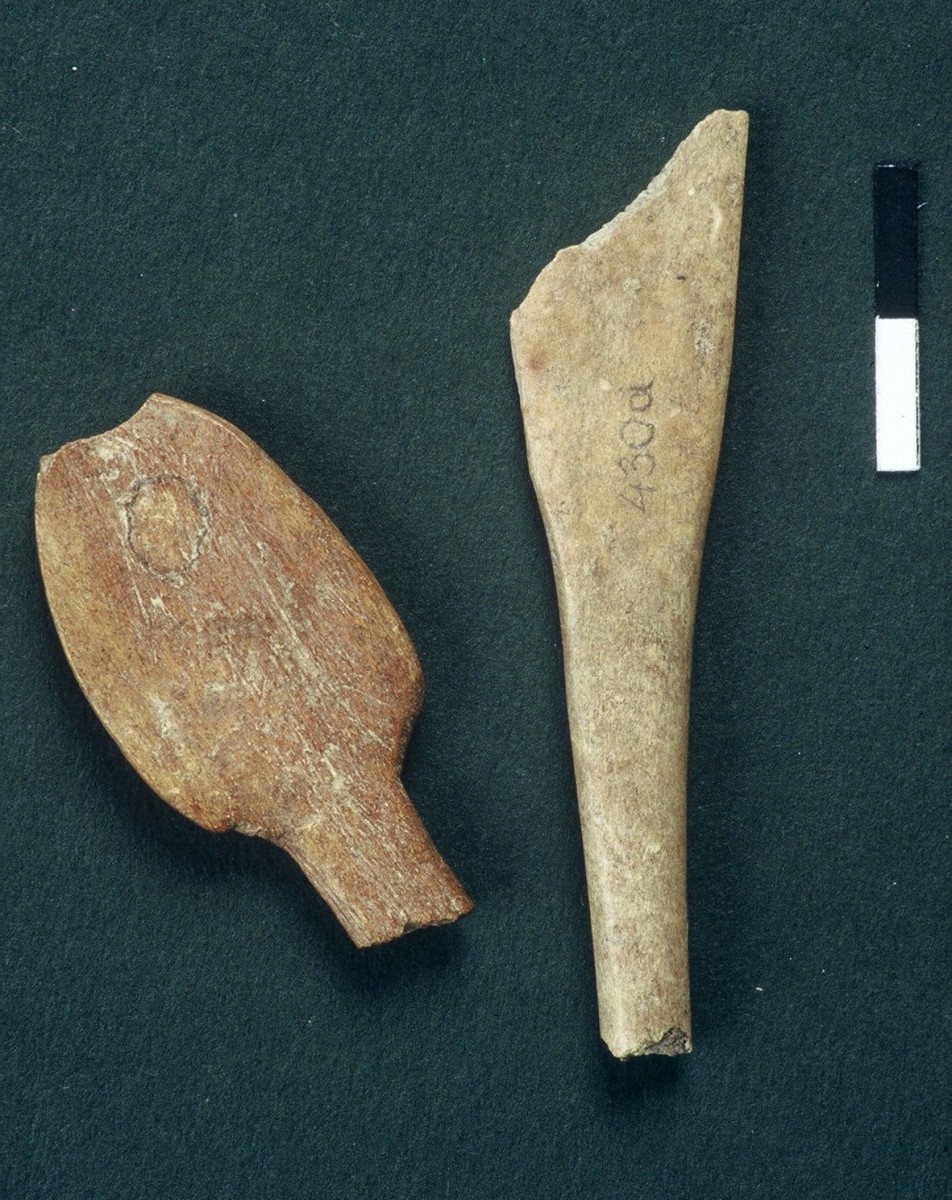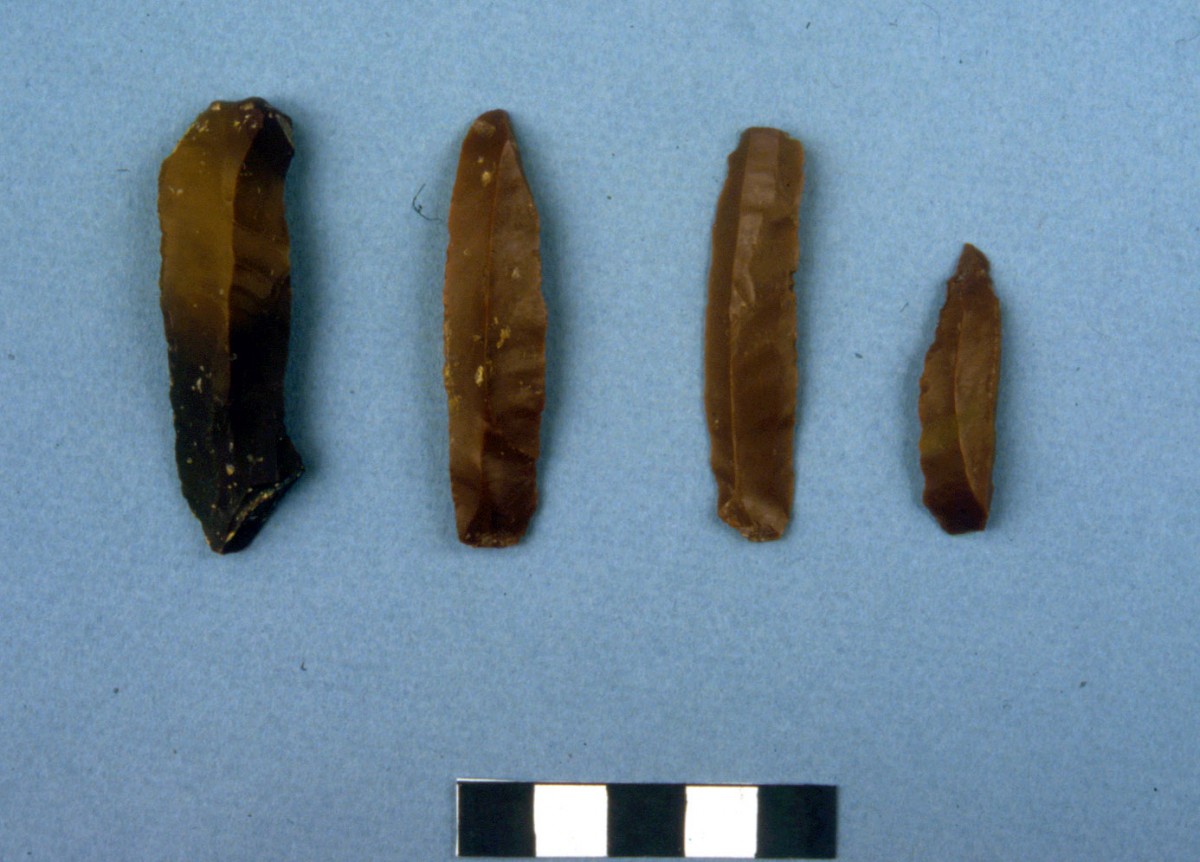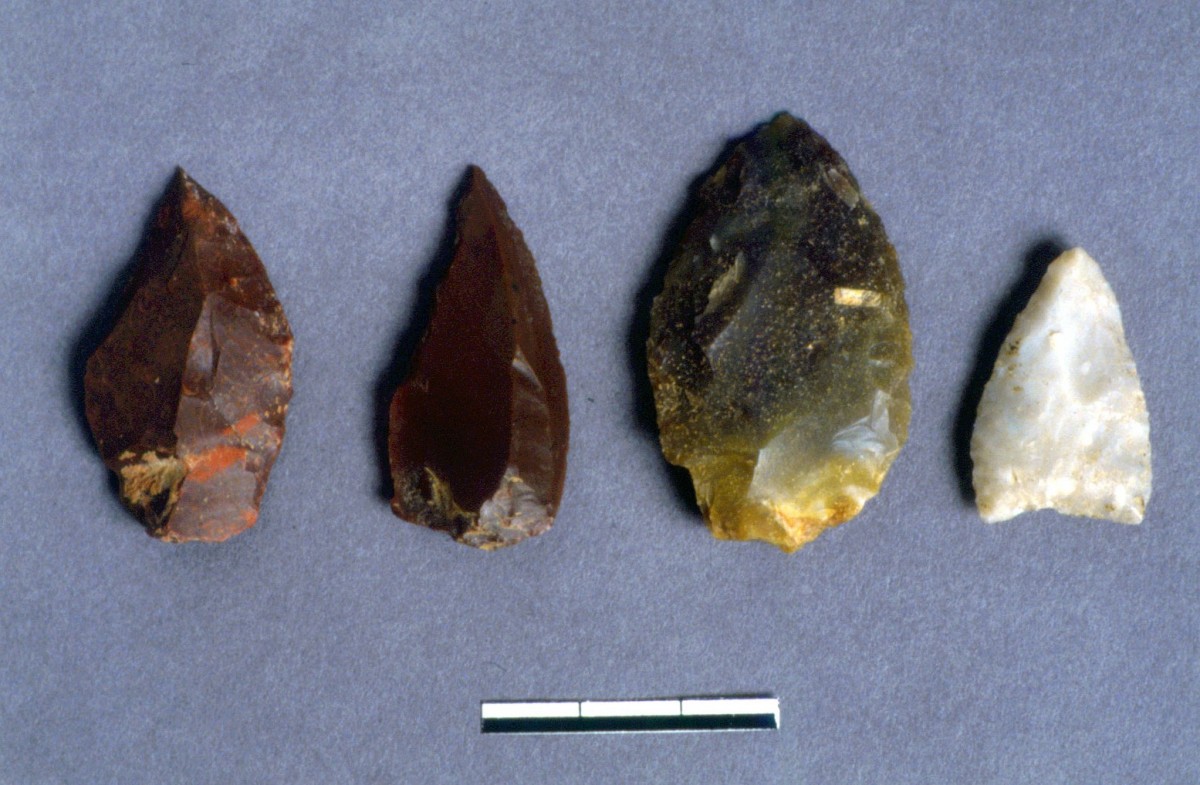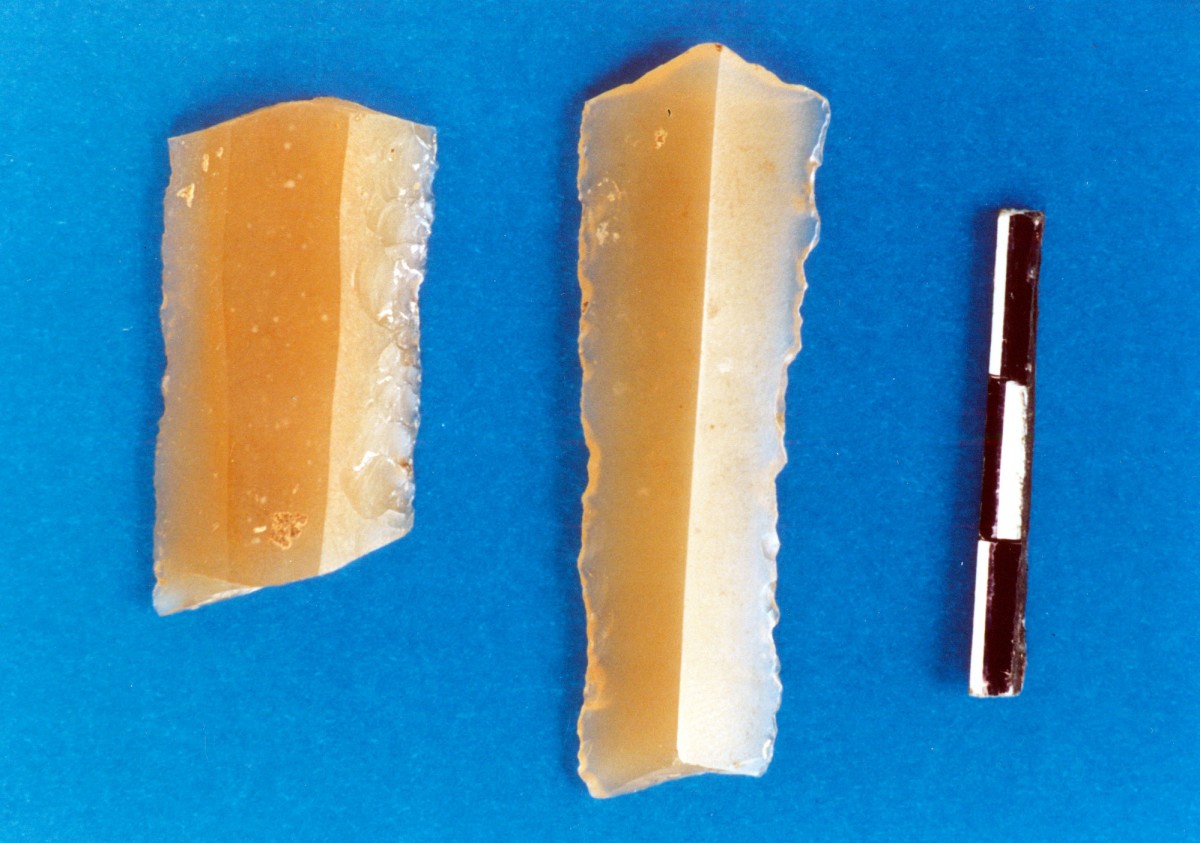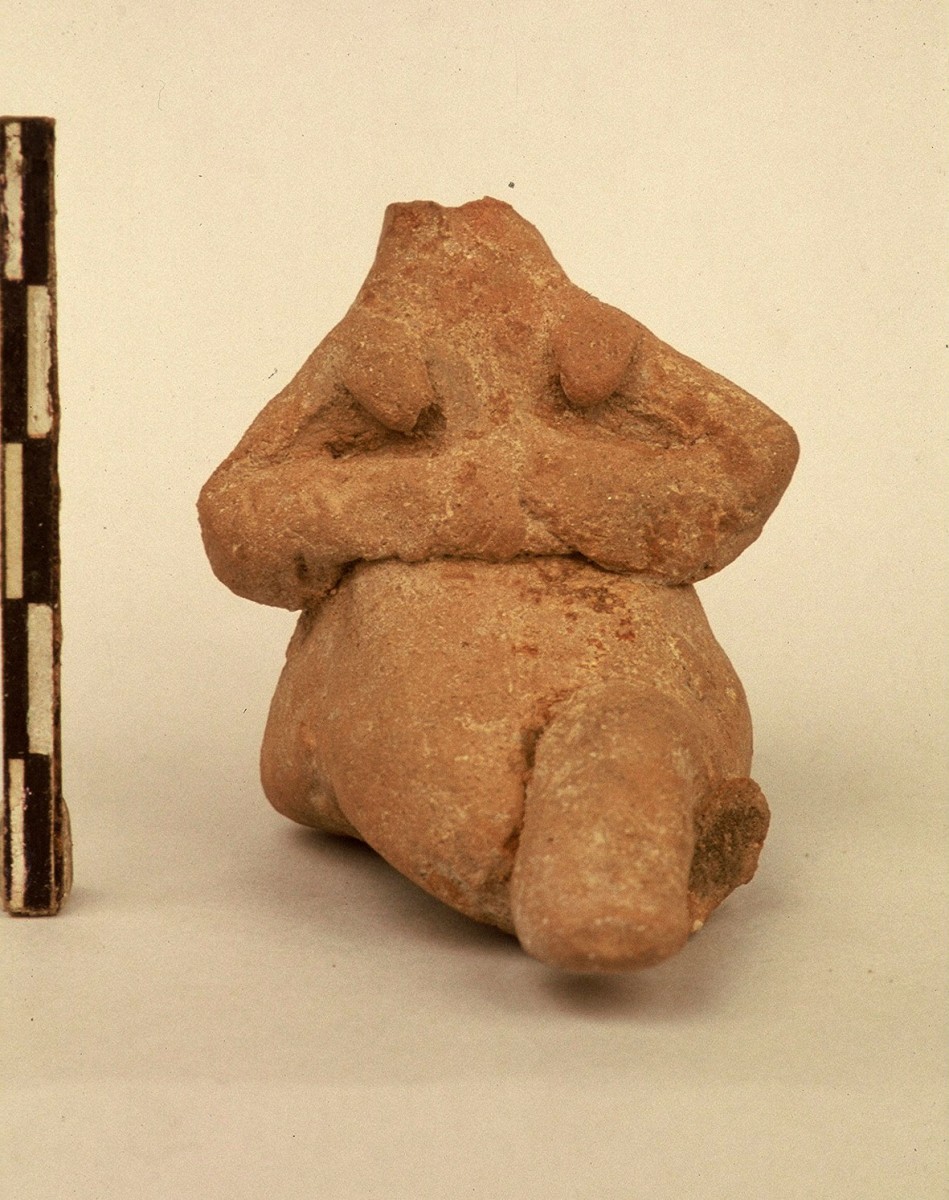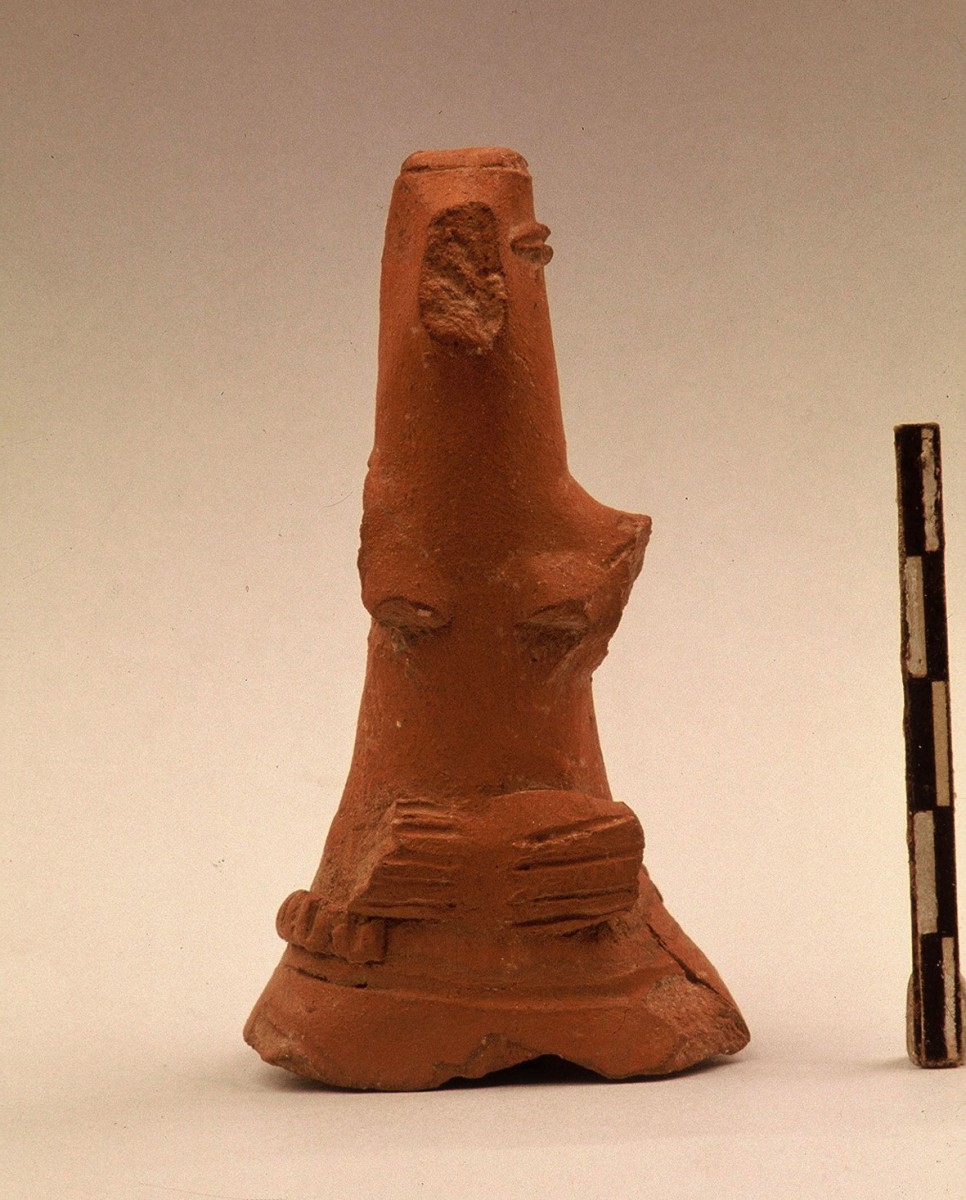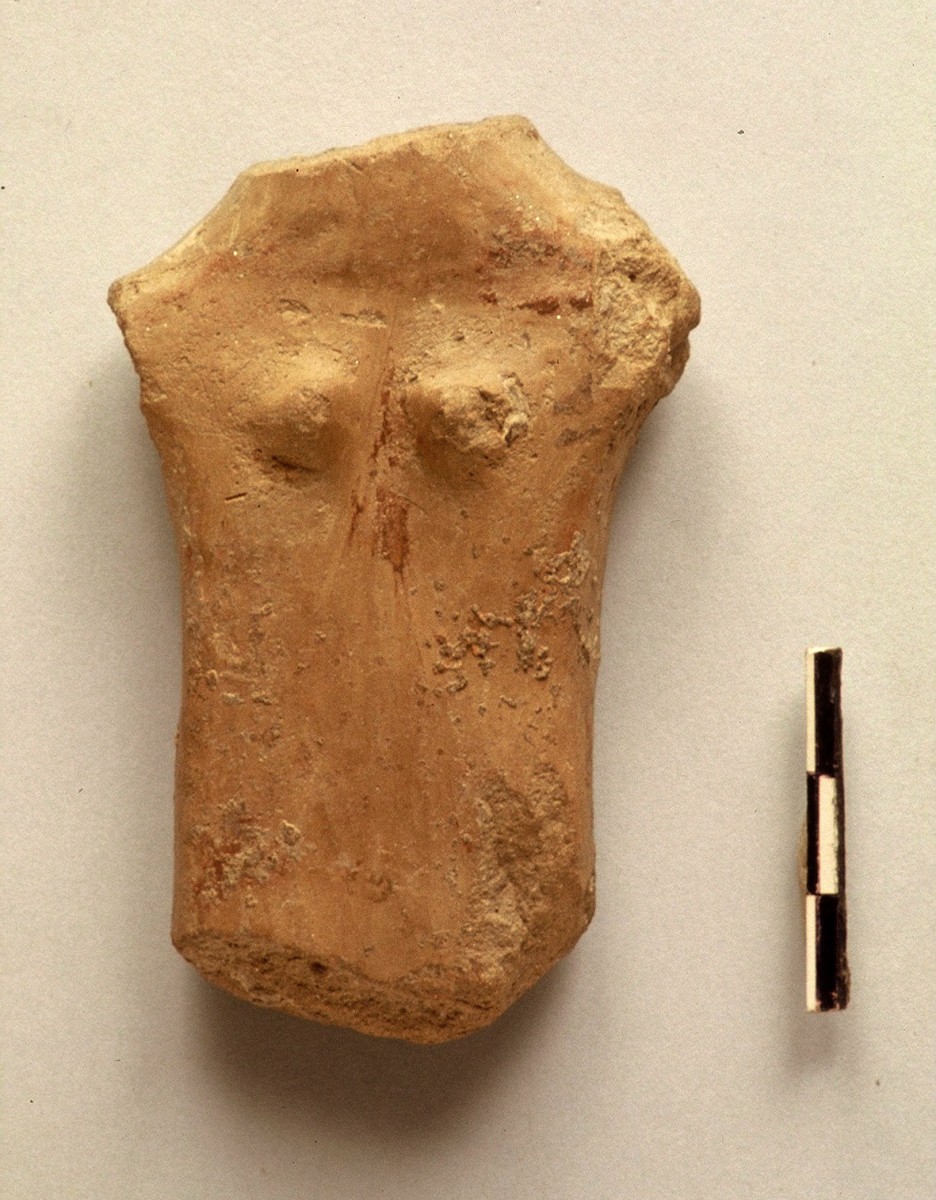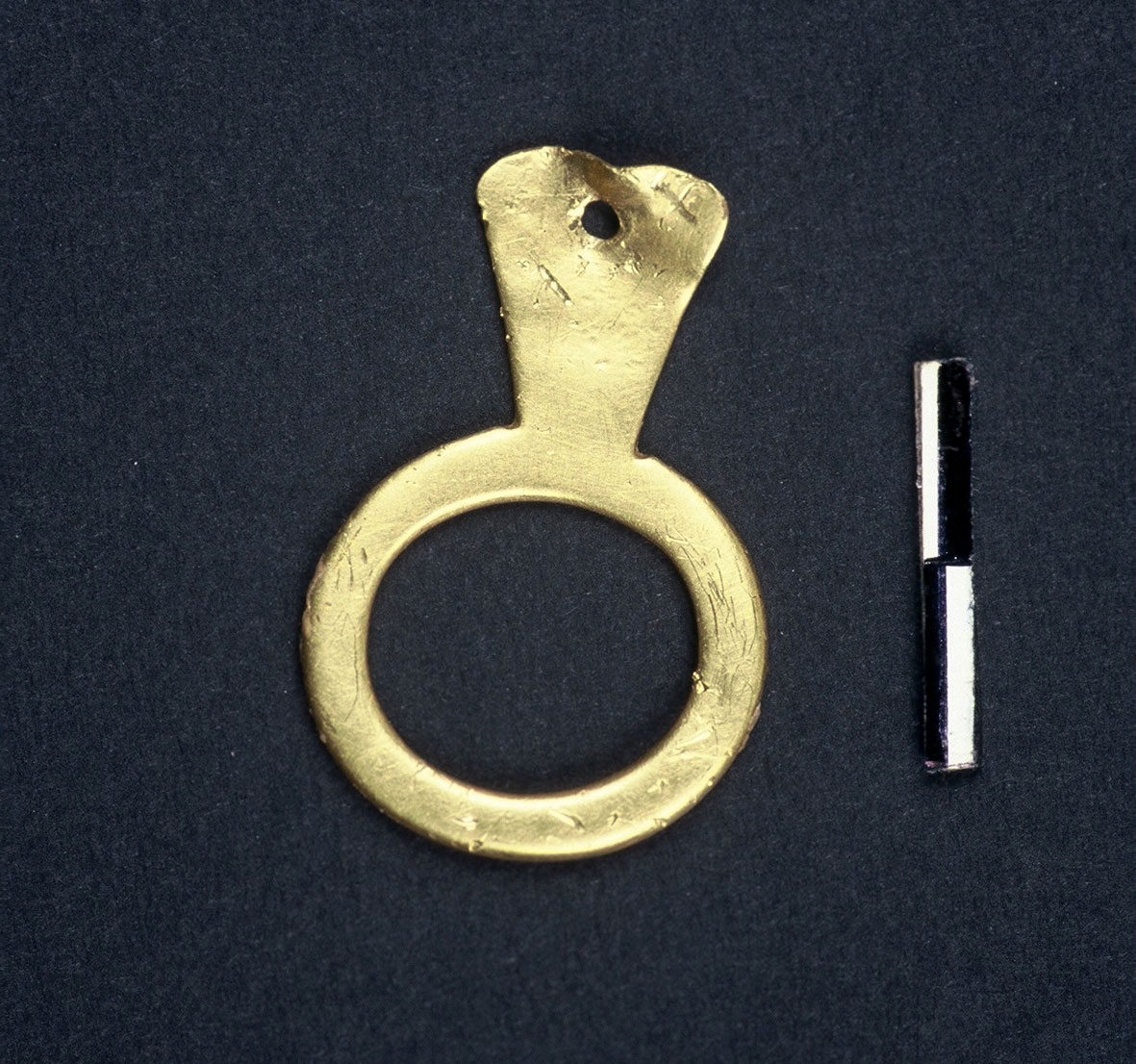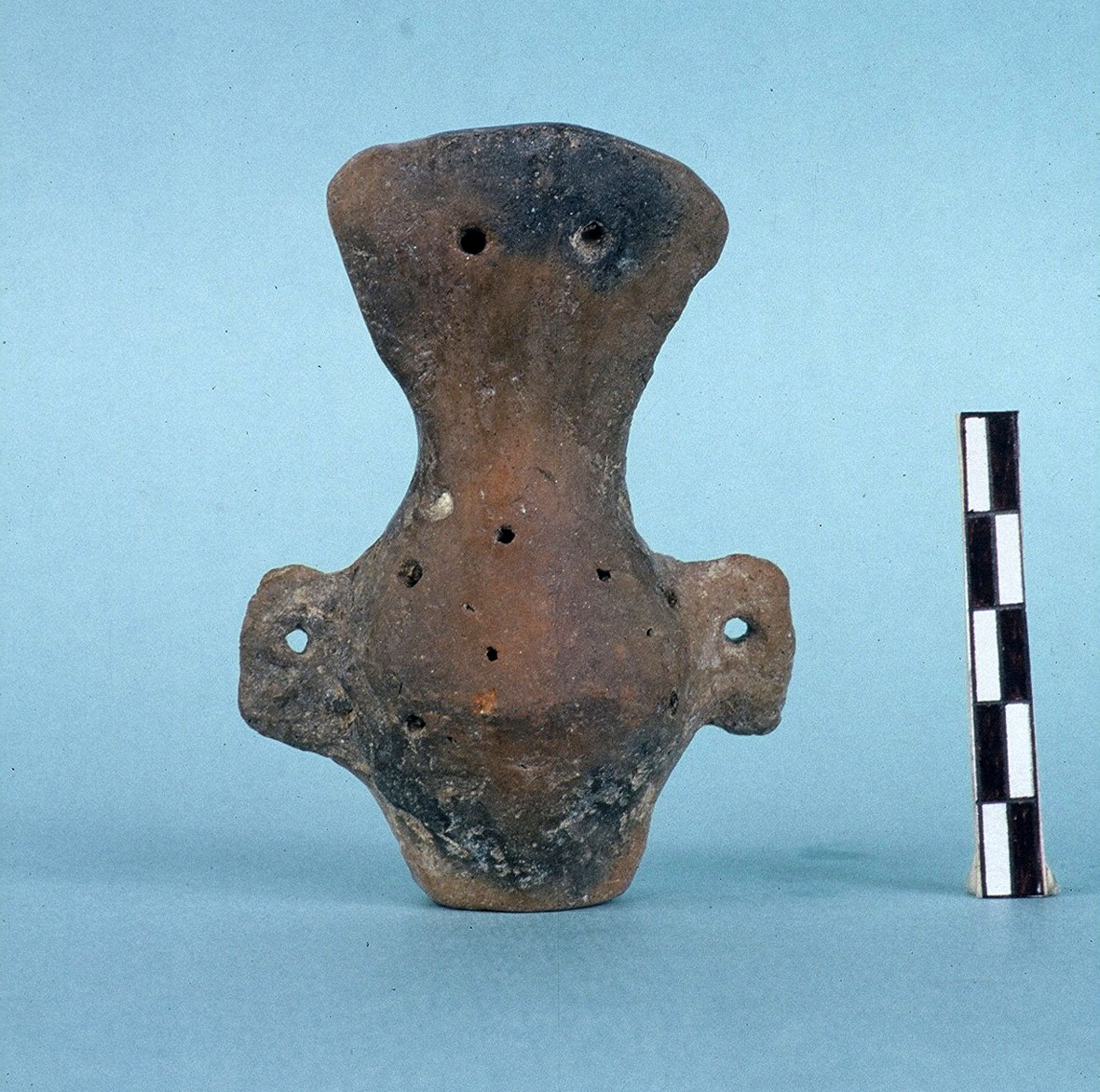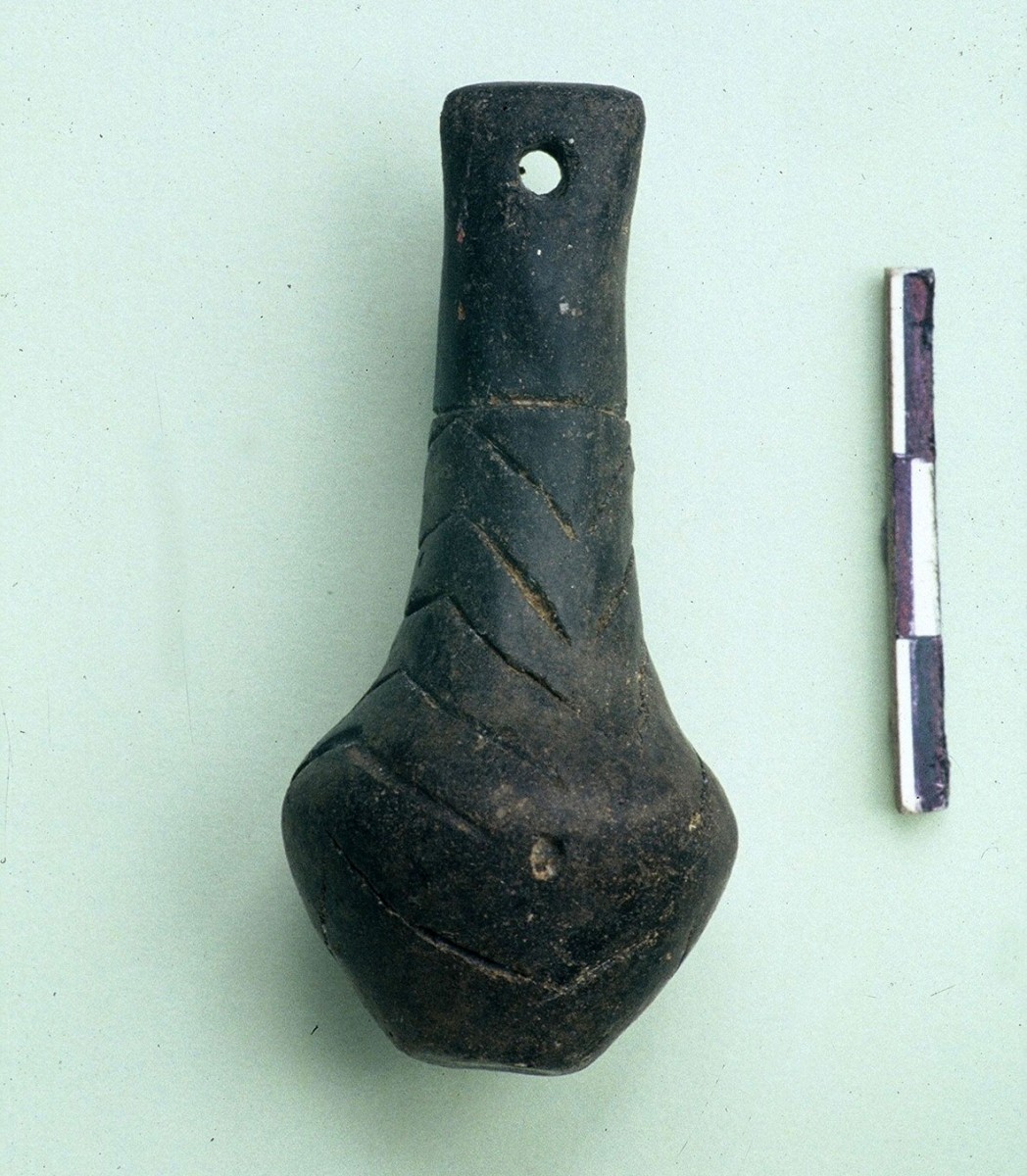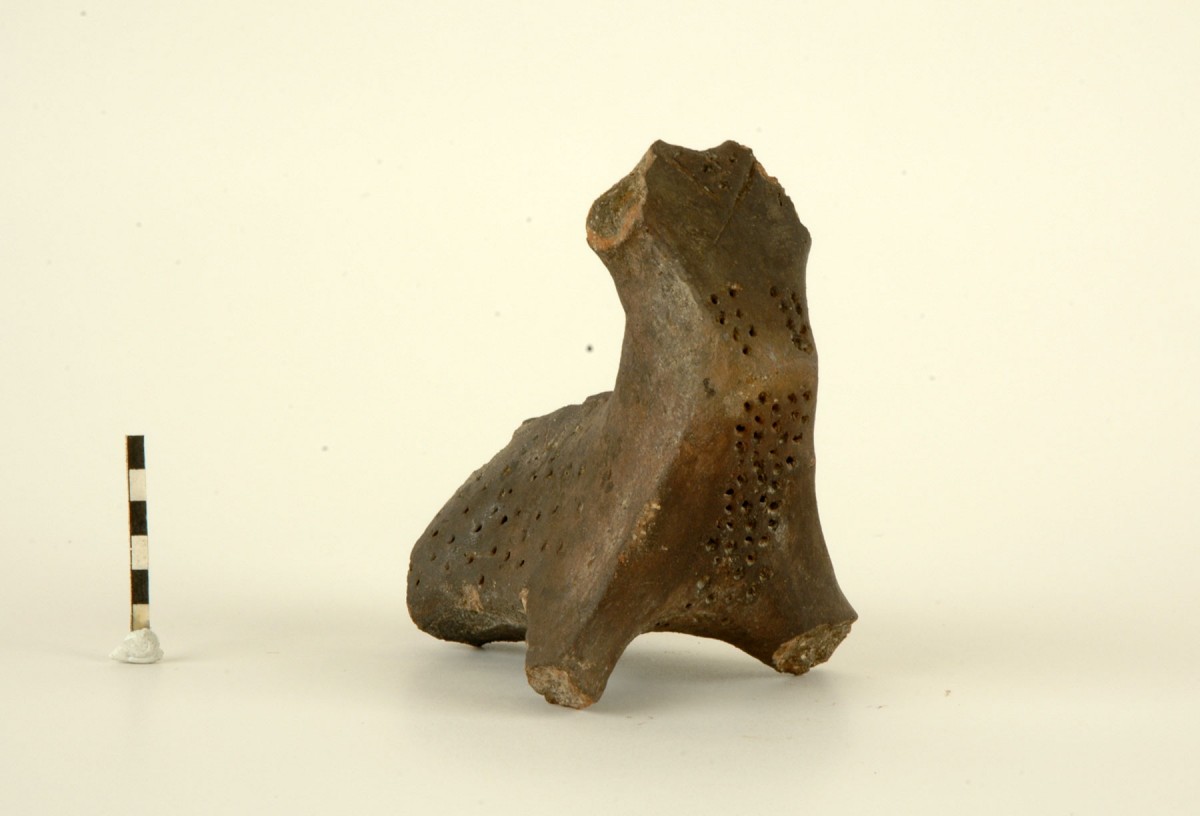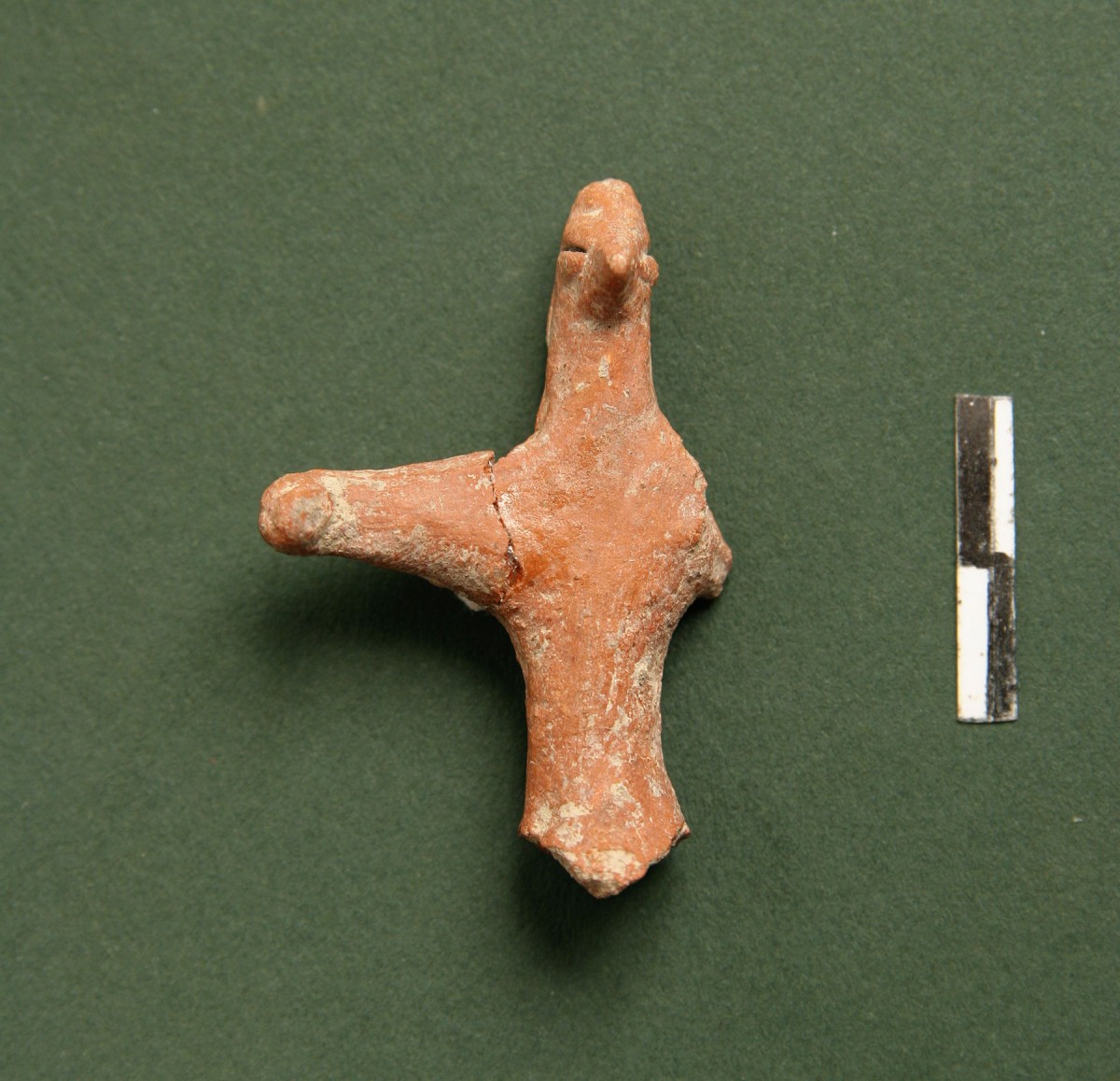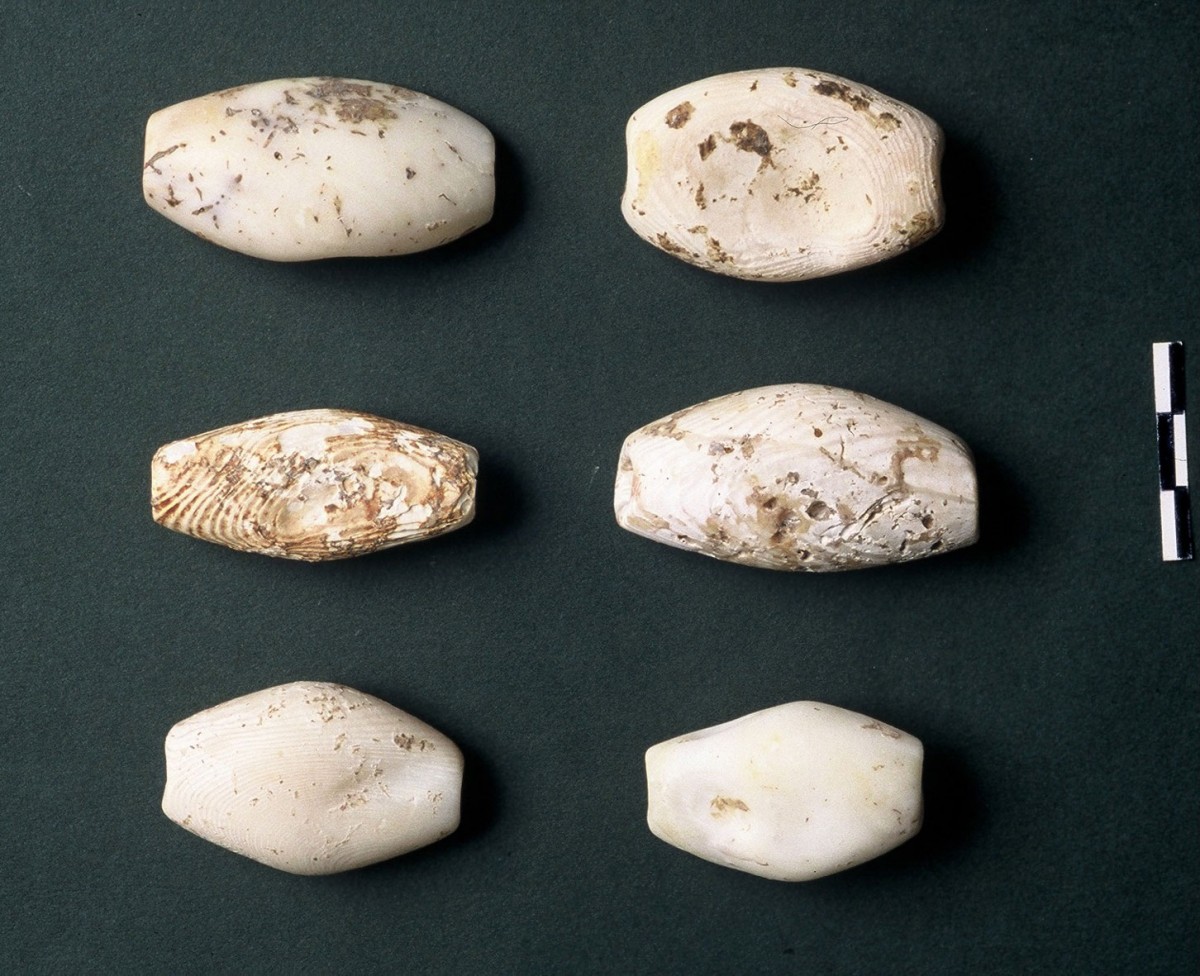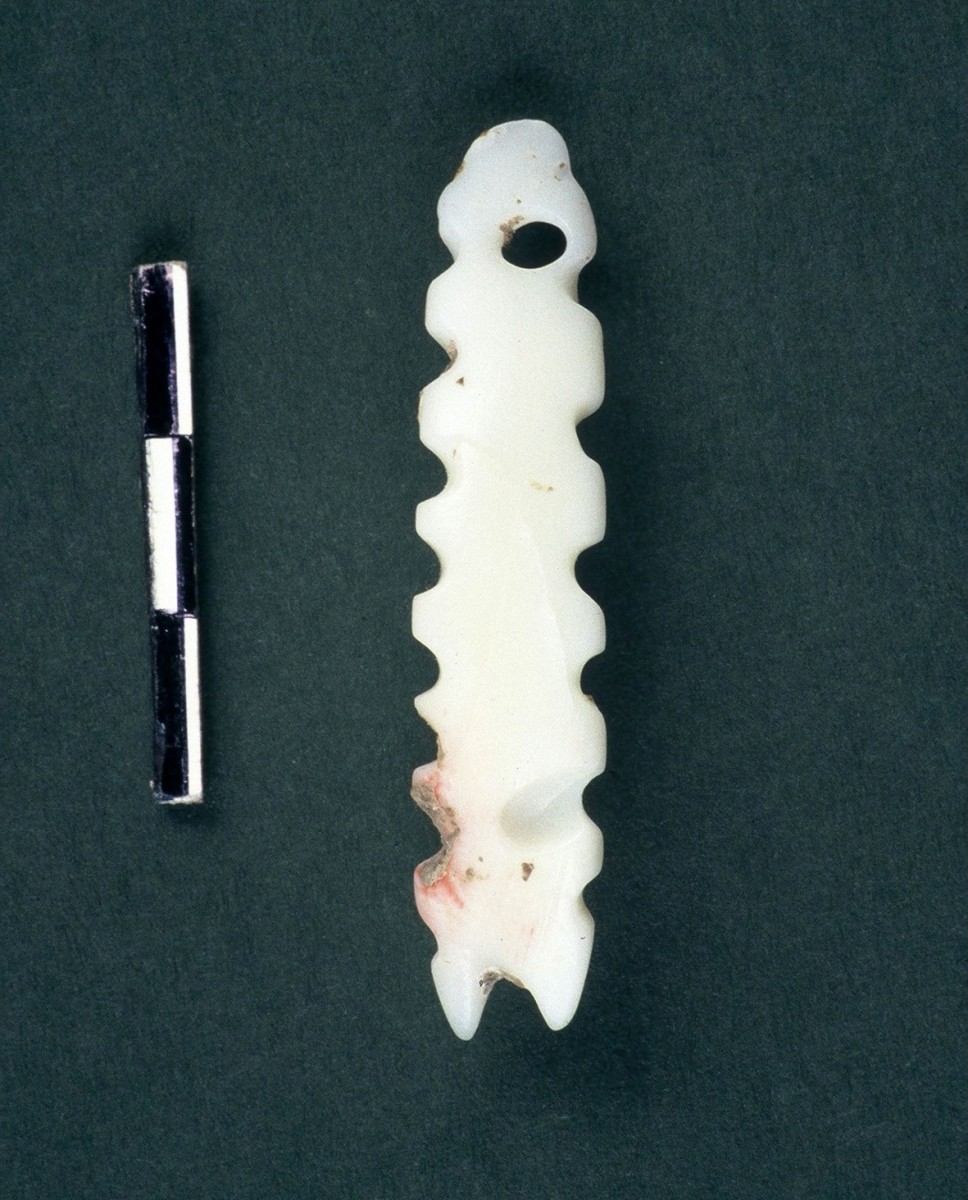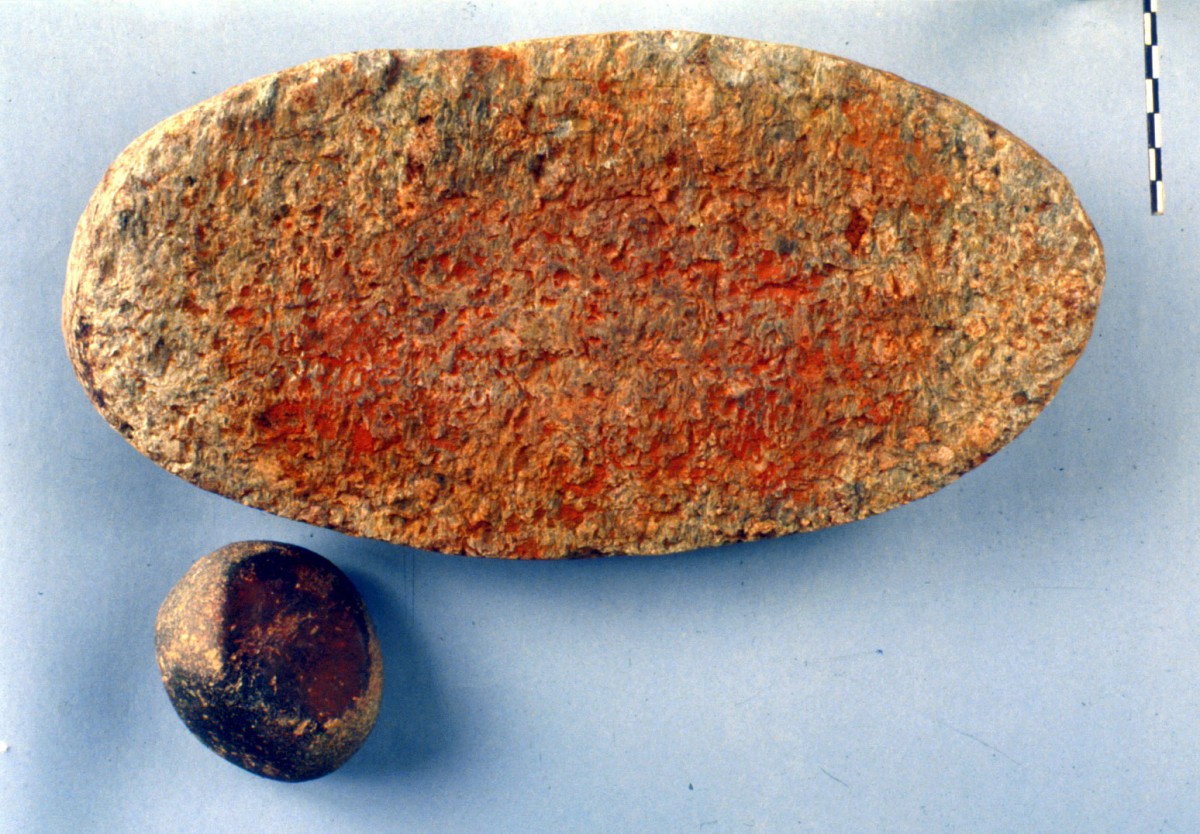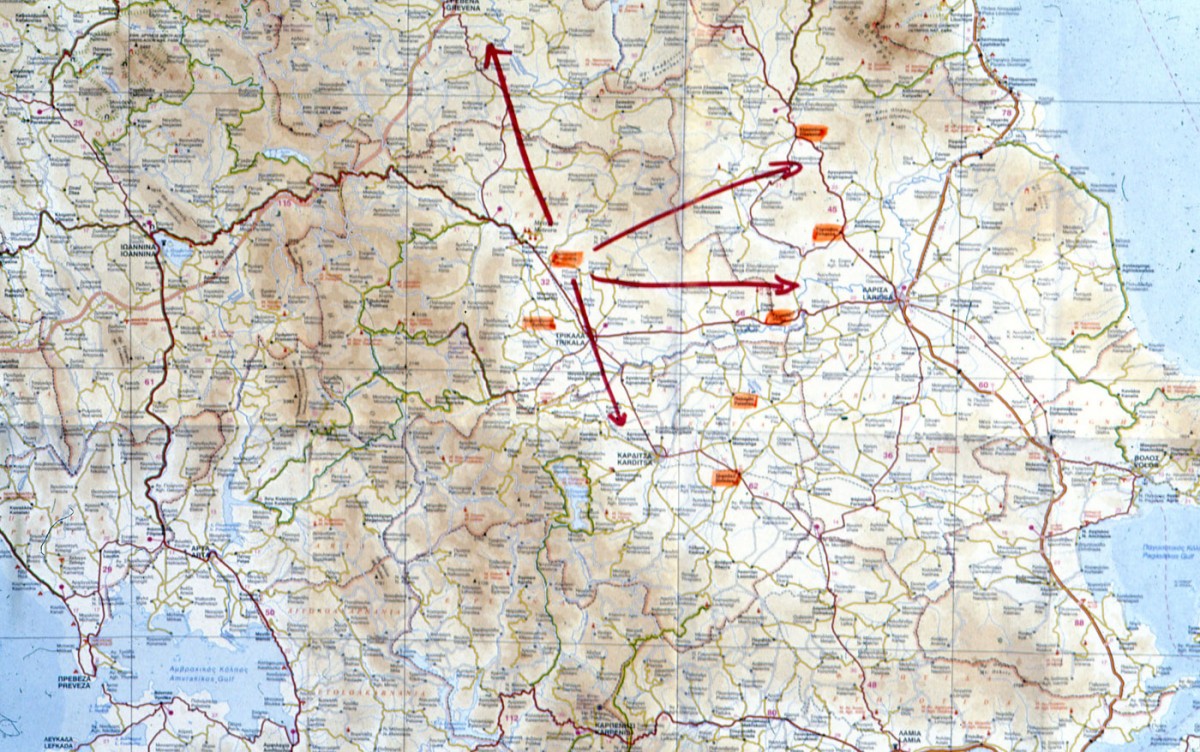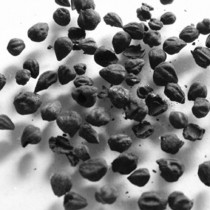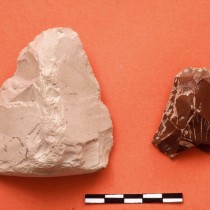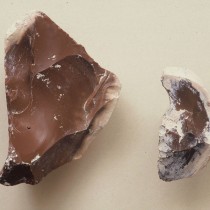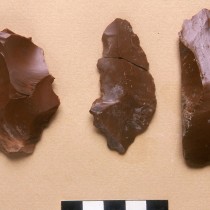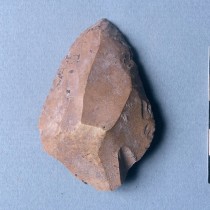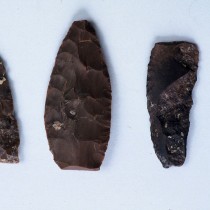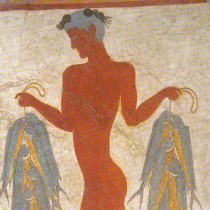Particularly important information also results from the archaeobotanical remains and the radiocarbon study.
By the process of water sieving, burnt fruits were located in the Palaeolithic layers, such as wild almonds, blackberries, figs, wild terebinth, peas, dogwood, buckthorn et al. leguminous plants (pulses-lentils, peas, vetch) and graminaceous plants (cereals-barley, oats) as a result of fruit collecting for consumption, as well as other types of weeds used mainly for fodder, while it is very possible that the Palaeolithic tenants of the cave used an even greater variety of fruits and plants that did not survive their times. Wild pulses continue to appear among the Mesolithic samples, as well as wild fruits and nuts and other types of plant that were either part of the cave inhabitants’ diet or were used in other activities. In the Neolithic period, the wild ancestors of cereals are replaced by cultivated species, while wheat (einkorn and mainly emmer) is found in the greatest numbers. Along with the cultivation of pulses and cereals, the tradition of food gathering is retained, to a large degree, by Neolithic farmers, made evident by the continuing presence of wild plants in the assemblage of the location’s Neolithic archaeobotany (figs. 1-2).
This archaeobotanical collection resulted from the systematic gathering of approximately 550 samples of soil which were treated to the water sieving process. Being the most ancient to originate from archaeological digs in Greece, Theopetra’s archaeobotanical material naturally constitutes a valuable data archive when exploring the early stages in the exploitation of the plant world in Greece. Moreover, this material’s primary importance lies in plant species that, while being encountered in the wild during the Palaeolithic period, are subsequently found as cultivated in the Neolithic, thus confirming civilization’s continuity on the same site (Kotzamani 2010).
Likewise, with charcoal identified from samples collected in the cave, through vegetation recognized at times (Νtinου 2000, Ntinou-Kyparissi 2008, Ntinou & Kyparissi-Apostolika in press), climatic conditions are confirmed that were described by geological analyses ,in correspondence with isotope stages and in pollen analyses carried out earlier on in various parts of Greece and Thessaly (Bottema 1979). According to these finds, humans first settled in the cave when Prunus sp. was dominant in the open woods (isotope stage 6 and transition 6/5). Next, the succession of temperate deciduous forests of oak, maple and Fraxinus in open formation reflect an improving climate during isotope stage 5e of the last Interglacial period. Steppe vegetation prevailed in times of cold and dry climate. Last, the spreading of the thermophile Pistacia and the reappearance of temperate species in forests, highlight the improving climate of the Holocene period.
Dating by various methods
The Theopetra cave is among the archaeological sites excavated in Greece to have been dated the most, both because of use of the place over a long period of time and its age, but also due to the great interest on the part of our colleague Dr Yiorgos Facorellis, who often did sampling by himself. More than 70 samples have been dated by the “Demokritos” Research Centre of Natural Sciences, ranging from 46330±1590 (calBP) to 2870-2350 B.C., as well as A.D. dates resulting from the cave’s more recent use(Facorellis & Mανιάτης 2000, Facorellis et al. 2002, 2013). In regards, however, to earlier dates, these exceed the possibilities of Carbon 14. Thus, fresh sampling was attempted at deeper levels and fresh dating at the Centredes Faibles Radioactivités, Laboratoire Mixtes C.N.R.S.-C.E.A. by the Thermoluminescence method, according to which, man’s earliest use of the cave goes back 110-135.000 years (Valladas et al. 2007). Understandably, the new results brought about a new debate, both on the stratigraphic sequence as a whole and the use of space.
Additional dating, however, was done in other laboratories internationally, such as the Simon Frazer University in Canada, the Weizmann Institute in Israel, the Poznań Radiocarbon Laboratory in Poland and in Oxford, so as to compare results and also in case of an insufficient quantity of carbon when an accelerator was required. Recently, results came out from the analysis of samples from the cave’s Palaeolithic sediments, so as to trace residues of ash from volcanic eruptions and attribute them to specific volcanoes and periods. Three ash deposits were in fact located by this analysis, corresponding chronologically to 128-131,000 years ago, > 50,000 and 45,700. The first and third deposit is attributed to the Pantelleria volcano and the second to that of Nisyros. Furthermore, the same analyses show the link between the cave’s intensive use and periods of good climate (Karkanas et al. 2014).
All results are published mainly by Y. Facorellis as well as P. Karkanas and the writer (see relevant bibliography).
Movable Finds
Understandably, the small/movable finds of this excavation are extremely varied, because they cover a large time span. They were also more numerous in periods of the cave’s intensive use e.g. during the Middle Palaeolithic era, but also after the last glacial during the Upper Palaeolithic, while they were almost rare during the very cold phase of the Upper Palaeolithic. There were also differentiationsin the Neolithic period, the Middle and Later periods being richer in finds, which was to be expected since the economy was improving constantly, as a result of a better climate as well as exchanges occurring between settlements. Towards the end of the Neolithic era, however, everyday finds become rare and whatever was found gave the cave a particular (symbolic) character (see below). We shall now look at a few representative finds from each period:
The main mass of the cave’s embankments, belonging to the Middle Palaeolithic era, have a high density in stone tools, compared with those of the cold periods and this points towards a time of great activity in the cave, even if this is not perhaps on a permanent basis. As noted previously, it seems that these tools were initially made of flint, found trapped inside limestone gravel from the bottom of the cave, as well as quartz (figs. 3-4). Later,they were usually made of radiolarite and chocolate coloured flint and less often of quartz and are of very good technology: the Levallois technique has been used for the making of flakes, blades and points. There is an impressive amount of scrapers, while there are also other types of tools in smaller numbers, such as backedknives, mousterianpoints, notches, truncations and denticulates, among which are leaf shaped and bi lateral spikes (figs. 5-11) (Panagopoulou 2000).
On the other hand, all the hard backfill with features of the cold climate during the Upper Palaeolithic period has a very low density in tools, of different types and sizes (figs. 12-13), adapted for limited activities due to the cold climate. Other finds (bones, charcoal etc) are also very restricted which implies the cave’s limited use by a small number of individuals. As we have mentioned, Upper Palaeolithic stone carving (Adam 2000) is clearly more limited, in terms of numbers, compared to the Middle Palaeolithic, it also includes truncations, notches, denticulates and particularly flakes with some secondary treatment on one or both of the cutting edges. Blades and scrapers are the main types of this stone carving while there is no shortage of other types in smaller numbers. Micro blades are rare but they exist none the less. These tools are made exclusively from different types of radiolarite that are thought to come from the area, but, nevertheless, there are materials brought from elsewhere, while the existence of cores indicates carving in situ. Generally speaking, these assemblages can be assigned to the complex of Epigravettian stone carving, also known from other places in Greece (Αdam 2000). In backfills corresponding to the period following the last glacial, but in the eastern part of the cave untouched by transgenesis, a pair of pierced deer teeth was found, followed by a fresh water shell that was also pierced (figs. 14-15),both constituting the first examples of man’s self adornment in Thessaly. The piercing was done in a completely different manner to the one later used in the Neolithic period, marking technological developments in the processing of materials. In the same layers in this area there was a real abundance of stone artefacts, clearly reflecting a period of better climate, strong human presence and activity.
The study of Mesolithic stone carving (Adam 2000) presenting both similarities and differences from the well known, to date, mainly coastal Mesolithic sites in Greece, is expected to give answers concerning the character of this period’s economy in the region, which naturally will differ from a coastal site (such as e.g. Franchthi or Maroulas on Kythnos). During the Mesolithic period, emphasis is put on the production and proper use of flakes, which has also been stressed in the case of the Franchthi cave belonging to the same period (Perlès 1990, pp. 43-83).
Although, as mentioned before, the Neolithic stratigraphy is particularly disturbed, a great variety of ceramics (figs. 16-24) the majority of which are of very good quality, represent all the well known types as well as all the cultural phases of this period in Thessaly, including the earliest (Kyparissi-Apostolika 2000a, Katsarou 2000, Kaznezi, in the forthcoming volume on the Neolithic period). Similarly other types of small finds made of bone, horn (Stratoulis 2000), polished stone (Christodoulou 2000) et al., certify the use of the cave during the Neolithic period (figs. 25-31). Likewise, a variety of flaked stone tools primarily made of flint, but also, less often, of obsidian (figs. 32-33), shows that 81% of them were made on site, as there is a marked presence of remains from their production, including the cores (Skourtopoulou 2000). At times, however, there are also imported pieces (fig. 34). Moreover, the different types of numbered figurines indicate a production away from the site (figs. 35-37). But however familiar the Neolithic period has become to us from excavated open sites on the plain of Thessaly, it appears that the character of this cave was special, mainly at the end of the Neolithic period, judging from some outstanding finds. These include a gold pendant (fig. 38), some figurines and objects of Balkan origin (figs. 39-42) that result from exchanges at a first or second level, thus proving the broad network for the handling of luxury goods. Furthermore, a considerable amount of shell jewellery (figs. 43-44), generally rare inside Thessaly, perhaps confirm the theory that towards the end of the Late Neolithic period, when open air facilities had by that time been well established, the cave seems to have become a particularly symbolic destination (Kyparissi-Apostolika forthcoming).On the contrary, the presence of many millstones (fig. 45) (at least 100 have been found) implies permanent residence over long stretches of time, for some of the Neolithic periods.
Theopetra and its role in shaping the prehistoric landscape of Thessaly
The Theopetra excavations began, on the one hand, very cautiously because we were then inexperienced in cave excavations, but also enthusiastically because of the unique experience it offered us. Perhaps because of the particular environment, I honestly hoped that things would be revealed to us never seen till then in excavations of open air Neolithic settlements in the plain of Thessaly. In no way, however, had we imagined what was finally revealed to us: proof of man’s timeless presence in Thessaly over the last 130.000 years of prehistory! I cannot describe my emotions each time a human burial was revealed, despite my familiarity with burials from historical or Neolithic times. The latter were always within the specific limits of a grave or inside vessels. Coming upon a burial, however, inside a huge volume of the embankments at Theopetra happened by pure chance, since there were no indications of it. Perhaps the discovery of human footprints was to be an even greater thrill, since this was completely beyond our expectations.
Beyond all doubt expressed in past bibliographies (Perlès 1988, Runnels 1988), here is proof of the continuity of civilization in Thessaly, long before the Neolithic period. Palaeolithic finds had been sporadically located during the 1950s on the banks of the Pineios river (Μιlojcic et al. 1965). Due, however, to the lack of related excavations proving that man had settled in Thessaly during these periods, these finds had been attributed, mainly by foreign scholars (Runnels 1988), to the sporadic movement of Palaeolithic hunters from other parts of Greece, e.g. Franchthi in Argolis (Jacobsen 1976), where the Upper Palaeolithic-Mesolithic and Neolithic periods have been located (not however the Middle Palaeolithic). Moreover, earlier on, particular emphasis was placed on the complete absence of the Mesolithic period in Thessaly. Despite being seen as the cradle of Neolithic civilization in Greece, this region was not recognized as having a cultural infrastructure, since it was thought that the knowledge that differentiated the Neolithic from earlier prehistoric periods, namely the establishing of agriculture and the technology of ceramics, was caused by populations moving from the Middle East and the spreading of relevant experiences. Voices like that of D. Theocharis (Theocharis 1967, p.34) had not yet found any response. It was he who said, very early on, that just the same environmental conditions existed in Greece, allowing these types of knowledge to develop here as well as the Middle East and that we must go backwards in our quest for the Neolithic period’s continuity, searching inside caves.
The Theopetra excavation led not only to the discovery of the pre sequel to the Neolithic (or Mesolithic) period in Thessaly, but the embankments went much further back in time, highlighting this site as a human refuge over many thousands of years. These humans were also involved in activities outside the cave, very probably following the animals in search of food and better temperature conditions in summer, in the surrounding mountains (Apostolikas 2014), when the climate was suitable. During very cold periods, thanks to this cave, perhaps a small number of people survived who guided this civilization on to the next stages and finally to the Neolithic “revolution”. The finds in the cave prove that the cultivation of fruits resulted from knowledge acquired from wild plants, since in the Neolithic period the same species are found initially in the wild and later in their cultivated form. Likewise, the technology of ceramics went through many transitional stages, since the collecting, shaping and drying of clay are confirmed at least by Theopetra’s Mesolithic embankments, thus leading to the organized ceramic technology of the Neolithic period. We are certain that there had also been an exchange of knowledge between populations that definitely moved around from nearby regions. Moreover, it is very possible that the Theopetra cave constituted the nucleus (or one of the nuclei) of our civilization’s development and the point for the “launching” and dispersion of Neolithic settlements throughout Thessaly, since most of those of the Earlier Neolithic period are located in western Thessaly in the Trikala-Karditsa plain (Megalo Kefalovryso, Magoulitsa, Prodromos and others that have not yet been excavated) with others dispersed to the north (Grevena) and east (Larisa, Volos) (Kyparissi-Apostolika 2006) (fig. 46). Finally, there is a theory that caves in the Aegean functioned generally as places of symbolism (Tomkins 2009). In the case of Theopetra we could probably support this theory when applied to the end of the Neolithic period during which, according to the limited usual finds of home economics, it appears that the continuous use of the cave ceases and it is perhaps transformed into a symbolic place of offerings (Kyparissi-Apostolika, forthcoming).
Colleagues’ contributions – Acknowledgements
Initially Maria Mangafa was responsible for the particularly important role of studying the archaeobotanical material and supporting the indigenous development of agriculture, but following her sudden untimely death Dr Georgia Kotzamani carried on the work with exceptional zeal and effectiveness. Likewise, Dr Maria Ntinou studied the carbon residues that, along with analysis of sediment related to the climate, shape the natural environment in each period.
The dating of a long series of both carbon samples and bones at the “Demokritos” Research Centre by Dr Yiogos Facorellis and Dr Yiannis Maniatis determined the course of the excavation. Particularly Yiogos Facorellis was always willing to go off to take samples, whenever we thought it necessary, and he contributed not only to the precise dating of all the samples, but also in calibrating samples we sent to laboratories abroad. Moreover, as the Palaeolithic samples were the oldest ever to have been dated in Greece by the Carbon 14 method , fresh dating was needed to be done by the thermoluminescence method. This was carried out by Dr Ηélène Valladas at the Centre des Faibles Radioactivités, Laboratoire Mixtes C.N.R.S.-C.E.A. in France,to whom we are also very grateful because those much older dates of the cave’s use clarify the stratigraphic sequence. The same method was used at “Demokritos” by Dr Nikos Zacharias and Dr Yiannis Basiakos to date the “episode” of the artificial safety barrier in the cave’s entrance and this helped to interpret the work.
Dr Eleni Panagopoulou was responsible for the study of Middle Palaeolithic stone carving, a rare assemblage in Greece and was later helped by Dr Viki Elefanti to complete the study with material from more recent excavations. Dr Eugenia Adam undertook the study of stone carving in the sparsely populated cave of the Upper Palaeolithic period and the Mesolithic that was unknown till then regarding Thessaly, with whatever problems these factors entail. K.Skourtopoulou studied the respective Neolithic stone carving of flaked tools, which was completed by Dr Alexandra Christopoulou and Maria Hadou with their study of the other category of stone tools, namely chipped and millstones. Bone tools were the subject matter of Dr Georgia Stratouli’s study. Dr Stella Katsarou and Angeliki Kaznezi undertook the study of pottery which was challenging because it involved stirring up the soil. The former studied monochrome pottery which makes up the greatest percentage and the latter the decorated category, while Dr Areti Pendedeka and Dr Anastasia Dimoula searched for the sources of clays for pottery, the study of which led to the discovery of both local clays and others that were imported. In the same team for the study of ceramics, Dr Orestis Dekavallas studied the organic residues in the vessels’ interiors. I am deeply grateful to all of them.
During all these years, the cave’s excavations were supported by all the personnel of the Ephorate of Palaeoanthropology and Speleology (EPS). Evangelia Deilaki, its head at the time (1987) was the first to support my almost reckless decision in starting such a big excavation. I am grateful to her even though she can no longer hear me. The contribution of the surveyor engineer Theodoros Hatzitheodorou was particularly important. He was with us from the start, at the first autopsy, for the measuring and design of the cave’s ground plan and the establishing of the quadrat plan with the help of Maria Driva, a fellow surveyor. Each year, both of them were always available. All the archaeologists of the EPS worked and trained on this excavation and particularly Sissy Kormazopoulou, Angeliki Kaznezi, Yianna Zigouri, Alexandra Mari and Yiannis Manos who both participated systematically in overseeing the trenches. Geologists Dr Evangelos Kampouroglou and Dr Vasilis Yiannopoulos also got involved with Theopetra, mainly at the start of the excavation, solving my initial geological queries. I am grateful to all the following: the conservators Panos Polydoropoulos and Yiota Gioni, who also contributed to the work of the cave’s promotion and the exhibition in the museum, the designers and graphic artists Dimitra Bakoyiannaki, Maria Deilaki and Anastasia Tzalla and all the Ephorate’s personnel in general (accountants, administration, technicians) who, each in his/her capacity, spent time working for Theopetra.
Finally, with many Greek and foreign colleagues outside the ephorate we shared concerns and views over the long course of the excavation that helped the research move on. I would particularly like to mention my unforgettable teacher Yiorgos Hourmouziadis and professor Kostas Kostakis of the Aristotle University of Thessaloniki. Last,it would be an omission not to thank the following for their contribution to the work of Theopetra: First the Ministry of Culture for its financial support of the excavations over all these years, as well as the Prefecture of Trikala and the Institute of Aegean Prehistory (INSTAP)who financed the excavations, while the latter is still financing the studies and the preparation of the final publication. The Literary, Historical , Literary Association of Trikala (F.I.LO.S- headed by Dr Th. Nimas) dedicated one of its annual conferences in1998 to the excavations of Theopetra and the Directorate of Prehistoric and Classical Antiquities of the Central Services of our Ministry with its head Dr L. Palama financed the publication of the Proceedings of this conference. Without the contribution of them all, we would never have succeeded.
Dr Nina Kyparissi-Apostolika
Head of excavations of the Theopetra Cave
